
AUDITION DATES
FRIDAY December 1, 2023
VOICE, PIANO, ORGAN
FRIDAY January 12, 2024
VOICE
SATURDAY January 13, 2024
BRASS, VOICE, PIANO, ORGAN
Where heart, mind and soul coalesce.
SATURDAY January 27, 2024
WOODWINDS, STRINGS, PERCUSSION, VOICE, PIANO, ORGAN
FRIDAY February 2, 2024
WOODWINDS, BRASS, STRINGS, PERCUSSION, VOICE, PIANO, ORGAN
SATURDAY February 17, 2024
WOODWINDS, BRASS, PERCUSSION, VOICE, PIANO, ORGAN
To learn more about the audition process, scan the QR code, then choose your instrument/area of study.
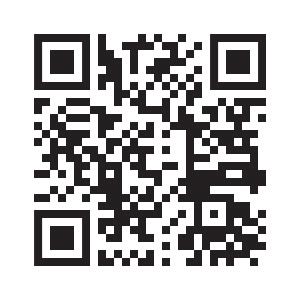
For more information:
music.baylor.edu or Callan_Monroe@baylor.edu
baylormusic @baylormusic

Baylor University admits students of any race, color, national and ethnic origin, sex, age, disability, or veteran status.
daniel bryson

1 Southwestern Musician | October 2023 CONTENTS VOLUME 92 ■ ISSUE 2 OCTOBER 2023 ON THE COVER: (front to back) Jude Sepulveda (Paetow HS junior, Katy ISD), Morgan Go (Stony Point HS senior, Round Rock ISD), and Charles Barnett (Houston homeschool senior) rehearse with the 2023 All-State Sinfonietta Orchestra.
by Karen Cross. 45 President Dana Pradervand-Sedatole . . . . . . . . . . . . 4 E xecutive Director Robert Floyd . . . . . . . . . . . . . . . . . . 8 Band Vice-President Shane Goforth . . . . . . . . . . . . . 14 Orchestra Vice-President Jennifer Martin . . . . . . 22 Vocal Vice-President Joshua McGuire . . . . . . . . . . . 34 Elementary Vice-President Christopher Giles 50 C ollege Vice-President Matthew McInturf . . . . . 54 COLUMNS Sound Ideas . . . . . . . . . . . . . . . . . . . . . . . . . . . . . . . . . . . . . band by tom harrington . . . . . . . . . .17 orchestra by kevin black . . . . . . . . . . . . 2 7 vocal by denise eaton 3 7 elementary by judy hudson . . . . . . . . . . . . 4 9 college by john m . denis . . . . . . . . . . . . 5 3 Strategies for Success in Low Socioeconomic Schools . . . . . . . . . . . . . . . . . . . . . . 18 by carly
Turn challenges into opportunities and transform the lives of your music students. Recruit, Retain & Rebuild . . . . . . . . . . . . . . . . . . . . . . . . 31 by
With an intentional and personal approach, you can grow the quality and size of your middle school program. Integrating Technology into the Secondary Music Classroom . . . . . . . . . . . . . . . . . 40 by
Engage students and help them experience freedom to explore
musical creativity
technology
music
Joyful Music Literacy for the Upper Elementary Classroom . . . . . . . . . . . . . . . . 45 by sarah tullock Show enthusiasm, curiosity, and a healthy sense of playfulness through your 3rd–5th grade music literacy instruction. TMEA Offers Undergraduate and Graduate Scholarships ........2 2024 TMEA Clinic/Convention 7 FEATURES UPDATES
Photo
addison
jodi coke
their
by incorporating
into your
instruction.
Undergraduate and Graduate Scholarships
Editor-in-Chief: Robert Floyd rfloyd@tmea.org | 512-452-0710, ext. 101
Managing Editor: Karen Cross kcross @tmea.org | 512-452-0710, ext. 107
TMEA Executive Board
President: Dana Pradervand-Sedatole, University of Houston president@tmea.org | 713-743-3627
3606 Glenwood Springs Drive, Kingwood, 77345
President-Elect: Jesse Cannon II, Fort Worth ISD presidentelect@tmea.org | 817-814-2635
1407 I.M. Terrell Circle South, Suite 2203-Room 02, Fort Worth, 76102
Past-President: Michael Stringer, Mesquite ISD pastpresident@tmea.org | 972-882-7300
3511 Lake Champlain Drive, Arlington, 76016
Band Vice-President: Shane Goforth, North Shore Senior HS bandvp@tmea.org | 713-516-7158
14122 Wadebridge Way, Houston, 77015
Orchestra Vice-President: Jennifer Martin, Fort Worth ISD orchestravp@tmea.org | 817-814-2640
4207 Crossgate Court, Arlington, 76016
Vocal Vice-President: Joshua McGuire, Rock Hill HS vocalvp@tmea.org | 469-219-2300 x 81201
16061 Coit Road, Frisco, 75035
Elementary Vice-President: Christopher Giles, Mireles Elementary elementaryvp@tmea.org | 210-394-0289
12260 Rockwall Mill, San Antonio, 78254
College Vice-President: Matthew McInturf, Sam Houston State University collegevp@tmea.org | 832-515-8724
17 Hornsilver Place, The Woodlands, 77381
TMEA Staff
Executive Director: Robert Floyd | rfloyd@tmea.org
Deputy Director: Frank Coachman | fcoachman@tmea.org
Administrative Director: Kay Vanlandingham | kvanlandingham@tmea.org
Advertising/Exhibits Manager: Zachary Gersch | zgersch@tmea.org
Membership Manager: Susan Daugherty | susand@tmea.org
Communications Manager: Karen Cross | kcross @tmea.org
Digital Communications Specialist: Amanda Pierce | apierce @tmea.org
Financial Manager: Cristin Gaffney | cgaffney@tmea.org
Information Technologist: Andrew Denman-Tidline | adenman@tmea.org
Administrative Assistant: Dana Whitmire | dwhitmire @tmea.org
TMEA Office
Mailing Address: P.O. Box 140465, Austin, 78714-0465
Physical Address: 7900 Centre Park Drive, Austin, 78754 Website: www.tmea.org | Phone: 512-452-0710 Office Hours: Monday–Friday, 8:30 a m –4:30 p m .
Complete
TMEA is pleased to offer scholarships each year for undergraduate and graduate study in Texas. Last year, TMEA awarded $207,000 in scholarships to 82 students!
Graduating High School Senior Scholarships

• Bill Cormack Scholarship: $3,000/year for up to five years.
• Past-Presidents Memorial Scholarship: $2,500/year for up to five years.
• Past-Presidents Scholarship: $2,500/year for up to five years.
• Executive Board Scholarship: $2,500/year for up to five years.
• One-year scholarships: $2,500 for one year only.
One-Year Undergraduate Scholarships
• TMEA awards one-year, $2,500 scholarships to current undergraduate students enrolled in a music degree program at a Texas college or university leading to teacher certification.
One-Semester Student-Teacher Scholarships
• TMEA awards one-semester, $2,500 scholarships to current college student members scheduled to student-teach within the two semesters following the application.
One-Year Graduate Study Scholarships
• TMEA awards a one-year, $1,250-to-$2,500 scholarship to students pursuing a music-related graduate degree at a Texas university.
www.tmea.org/scholarships
by Dr. H. Grady Harlan. Purchased in 1954 by D.O. Wiley. Texas Music Educator was founded in 1936 by Richard J. Dunn and given to the Texas Music Educators Association, whose official publication it has been since 1938. In 1954, the two magazines were merged using the name Southwestern Musician combined with the Texas Music Educator under the editorship of D.O. Wiley, who continued to serve as editor until his retirement in 1963. At that time ownership of both magazines was assumed by
to Southwestern Musician.
Southwestern Musician (ISSN 0162-380X) (USPS 508-340) is published monthly except March, June, July, and August by Texas Music Educators Association, 7900 Centre Park Drive, Austin, TX 78754. Subscription rates: One Year – $20; Single copies $3.00. Periodical postage paid at Austin, TX, and additional mailing offices. POSTMASTER: Send address changes to Southwestern Musician, P.O. Box 140465, Austin, TX 78714-0465. Southwestern Musician was founded in 1915 by A.L. Harper. Renamed in 1934 and published by Dr. Clyde Jay Garrett. Published 1941–47 by Dr. Stella Owsley. Incorporated in 1948 as National by Harlan-Bell Publishers, Inc. Published 1947–54
the publication
OFFICIAL PUBLICATION OF TEXAS MUSIC
TMEA. In August 2004 the TMEA Executive Board changed the name of
EDUCATORS ASSOCIATION
all application requirements by November 1. 2 Southwestern Musician October 2023
November 11, 2023
February 3, 2024
March 2, 2024
April 20, 2024

Bachelor's Degrees
Liberal Arts Music
Music Education
Music Performance
Music Therapy
Master's Degrees
Music Education

Music Pedagogy

Music Performance



Music Therapy

TWUDivisionofMusic
TWUMusicDept
TWUMusic
Follow us:
TMEA President
DANA PRADERVAND-SEDATOLE
Take Your Musical Vitamins
Whether you are studying to become a music educator or are a twenty-year veteran, you are still growing, and you need to take your vitamins!
We are so fortunate to work in a profession where we are surrounded by greatness. Of our most valuable resources are the educators who have come before us and, through their experiences, paved the way for us to learn and grow. I remember being a counselor at a Texas Tech University band and orchestra camp where one of my favorite things was hanging out after rehearsals, listening to the stories from some of the most successful and influential band directors in our profession. I learned so much from those conversations.
As I moved through my career and began running my own band programs, those influential band directors became clinicians, consultants, and mentors. Every time I was around one of them, I sought their advice and listened—their pearls of wisdom became my musical vitamins. I keep a journal of these tangible tidbits, and every so often I reread them. Their words always resonate with me, and their relevance and meaning have changed with the growth of my own experiences.
In this column, I’m pleased to share some musical vitamins from a few amazing educators to help support your growth in the profession. Whether you are studying to become a music educator or are a twentyyear veteran, you are still growing, and you need to take your vitamins!
Thanks go to these colleagues for sharing their reflections:
• Royce Coatney: Retired orchestra director and past TMEA Orchestra Vice-President.
• Reginal Wright: Composer, conductor, and lecturer in choral studies at Baylor University.
• Barbara & Rick Lambrecht: A former middle and high school
October—Renew your membership and register for the convention.
October 5, 6 a.m. CT—TMEA convention housing reservation system opens online.
November 1 —TMEA scholarship online application deadline.
January 18 —TMEA convention early registration deadline.
February 7–10 —TMEA Clinic/Convention in San Antonio.

MARK YOUR CALENDAR check www.tmea.org for updates 4 Southwestern Musician October 2023
MERLIN PATTERSON MUSIC
UIL PRESCRIBED MUSIC LIST SELECTIONS
J.S. Bach Sleepers, Awake! (published by Manhattan Beach Music)
J.S. Bach Toccata and Fugue in D minor
Hector Berlioz Roman Carnival Overture
Hector Berlioz Symphonie Fantastique: March to the Scaffold
Hector Berlioz Symphonie Fantastique: Dream of a Witches Sabbath
Johannes Brahms Academic Festival Overture
Aaron Copland Down a Country Lane (published by Boosey & Hawkes)
Claude Debussy The Engulfed Cathedral (published by Manhattan Beach Music)
Paul Dukas The Sorcerer’s Apprentice

Edward Elgar Variations on an Original Theme “Enigma”
Edward Elgar “Nimrod” from “Enigma Variations”
Percy Aldridge Grainger Mock Morris
Gustav Holst A Fugal Overture
Gustav Holst St. Paul’s Suite
Gustav Holst The Planets
Leos Janacek Sinfonietta
Gustav Mahler “Adagietto” from Symphony No. 5
Felix Mendelssohn-Bartholdy Overture for Wind Band, Op. 24
Modeste Mussorgsky Pictures at an Exhibition
Giacomo Puccini “Nessun Dorma” from “Turandot”
Ottorino Respighi Feste Romane
Nicolai Rimsky-Korsakov Scheherazade
Gioacchino Rossini Overture to “An Italian in Algiers”
Richard Strauss Don Juan
Igor Stravinsky “The Firebird” Suite
Igor Stravinsky The Rite of Spring, Part I
Michael Torke Javelin (available through Bill Holub Music)
Guiseppe Verdi “Requiem” Symphonic Suite
Heitor Villa-Lobos Bachianas Brasileiras No. 4
Ralph Vaughan Williams Rhosymedre
Richard Wagner "Procession to the Cathedral" from “Lohengrin” (published by TRN)
Please visit
for perusal scores and recordings
www.merlinpatterson.com
director, Barbara is a composer, active clinician, and visiting professor of flute at UT El Paso; Rick is a former high school director and now professor of horn at UT El Paso.
• Richard Crain: Retired music educator, Past-President of Texas Bandmasters Association, and former Midwest Band & Orchestra Clinic Board President.
The first question I asked is about lessons learned. As a musician and an educator, one secret to longevity and success is to be a lifelong learner. I hope that as you read their experiences and insights, you learn something that helps you continue sharing your passion for music through your profession.
What are some of the most important lessons you have learned over your tenure as a music educator?
Royce Coatney: Keep administrators, secretaries, and janitors happy. When possible, take care of discipline issues yourself, follow all protocols and procedures, respond to inquiries quickly, fill out forms accurately and timely, and keep your rehearsal rooms neat and clean!
Keep colleagues happy. Be flexible, cooperative, helpful, and supportive! Keep your professional organization officers and members happy—attend conventions, volunteer, mentor, and serve!
Keep students happy. Select repertoire that is appropriate for their skill level, challenges them to improve their technique, and inspires them with a musical experience they will never forget. And most importantly, watch, listen, and learn from every successful, experienced educator you encounter. As Chet Atkins said, “Copying one person is stealing. Copying ten is research!”
Reginal Wright: One of the most impactful lessons I have learned as a music educator is that at the end of the day, it’s a job. Proper balance between work and home life is vital to our survival as educators. Invest as much in your family and your personal health as you do your craft and students.
Barbara & Rick Lambrecht: There are no “free days” in a music classroom. Each day gives us opportunities for growth. Good days give happiness; bad days give experience; worst days give lessons; and best days give memories.
Richard Crain: Music is important, but ultimately, it’s about kids! The study of music impacts a student’s life in countless cognitive, physical, and physiological ways. Opportunities for social interaction help shape the whole child. Never give up on a student. As Tim Lautzenheiser often quotes, “What we do for ourselves is gone when we are gone. What we do for others is our legacy!” Great lessons for us all are:
• Keep people happy.
• Each day gives you opportunities for growth.
• Keep your life in balance.
• Remember that ultimately, it’s about the students!
While the answers to the first question will be especially important for teachers new to the profession, the next question is important for us all, especially those who might have been in this career for many years. With each new year come new opportunities, so I asked these educators about their response to the following:
What advice would you give our music educators in this new school year?
Royce Coatney: At all levels, let students play their instruments
rather than listen to you lecture. In just a few words, quickly tell them how to correct their mistakes, and then have them play the passage correctly two or three times and move on. At every rehearsal, praise, encourage, and improve the techniques and musicality of your students. In the words of Pablo Casals, “Don’t just play the notes. Play the meaning of the notes!”
Reginal Wright: We are investing in the lives of our students and, in essence, investing in the future of our districts, cities, and country. Be intentional with your teachings in and out of the classroom. As we tell our students, “Every day is an audition.” For teachers, every day is a lesson. We are always teaching. Whether we are on the podium or at the lunch table, we are modeling for our youth the proper manner of managing professional and personal relationships.
Barbara & Rick Lambrecht: Dreams don’t work unless you do! Be what you want from your students. If you want your band to be inspired, be inspiring. If you want them to be enthused, be enthusiastic. As John Quincy Adams said, “If your actions inspire others to dream more, learn more, do more, and become more, you are a leader.” On a pragmatic level, have a really good plan, don’t give up on it, and give it enough time to be successful.
Richard Crain: Believe that you are teaching the most important and essential academic discipline in the school curriculum. In addition, know that you are providing critical social experiences for students and a sanctuary where students feel safe and at home. These qualities cannot be adequately measured. And above all, persevere!
I again thank these educators for sharing their thoughts. What sound advice they have offered us!
• Let them play.
• Be i ntentional with your teaching.
• Dreams don’t work unless you do.
• And above all, persevere.
I hope you pause to consider their words of advice and can now reflect on your own answers to these questions. What is the best advice you have ever received and what are the most impactful lessons you have learned? I encourage you to write them down and remind yourself to take a musical vitamin when you need it!
Get Your Vitamins at Our Convention
We can all look forward to getting a bulk supply of musical vitamins during our annual convention held in San Antonio on February 7–10! Share your experiences and learn from others in clinics and in conversations along the way. Be inspired by your colleagues and their students during extraordinary performances. Make important connections with our music industry partners in the exhibit hall.
Learn more and register to attend at www.tmea.org/convention. You can view hotel rates in advance at www.tmea.org/hotelrates.
Email alert: Early in the week of October 5, TMEA will email members from membership@tmea.org with the preferred URL to use when housing opens at 6 a.m. CT on October 5 to experience the best website responsiveness. Note that members and exhibitors are already reporting receiving scam and phishing emails that are related to our event. If in doubt, go to our website. 0
6 Southwestern Musician October 2023

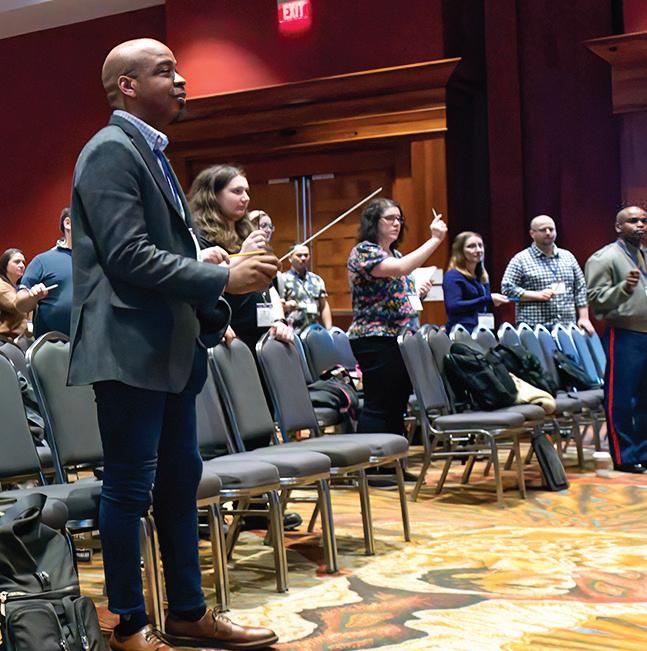

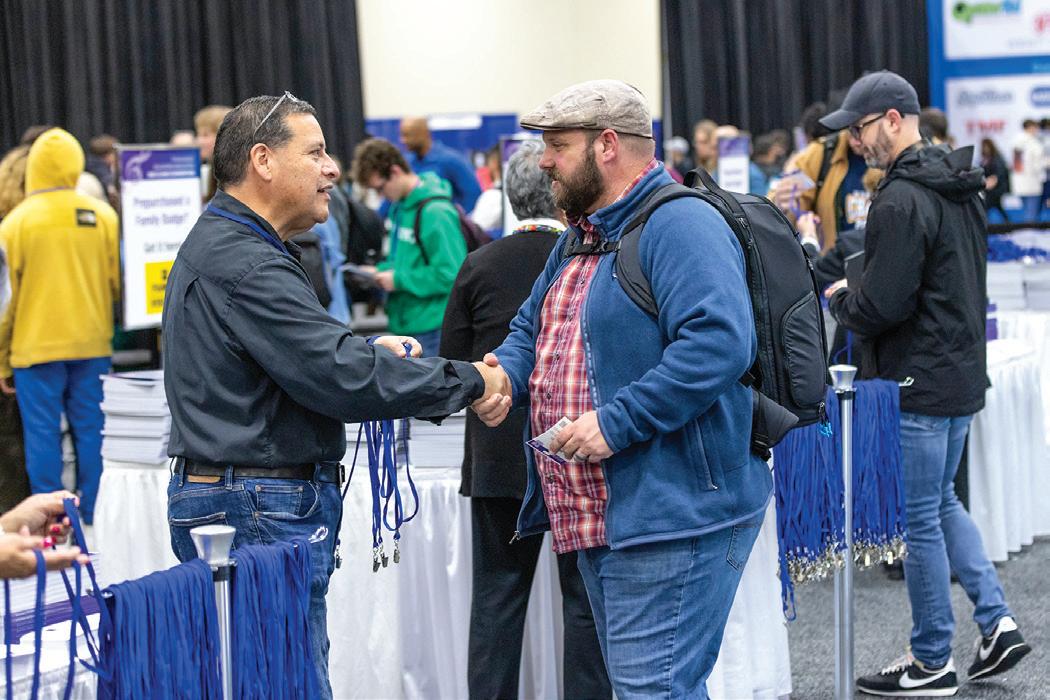

2024 TMEA Clinic/Convention FEBRUARY 7–10 SAN ANTONIO TMEA.ORG/CONVENTION Preview a list of clinics at www.tmea.org/2024clinics LEARN 330 TARGETED PROFESSIONAL DEVELOPMENT CLINICS Invited and Honor Ensembles listed at www.tmea.org/2024concerts BE INSPIRED 100 AMAZING ELEMENTARY TO UNIVERSITY PERFORMANCES CONNECT 14,250 EDUCATORS & COLLEGE STUDENTS EXPLORE 615 COMPANY & INSTITUTION EXHIBITORS Find out who is exhibiting at www.tmea.org/2024exhibitors 7 Southwestern Musician | October 2023
TMEA Executive Director
ROBERT FLOYD

It’s Time to Tell Your Story
No academic subject in our state’s curriculum has the good news story to tell that we do. We must take advantage of that by sharing our story with all who will listen.
September’s Southwestern Musician includes an amazing article on the importance of fine arts advocacy and how a first step is creating and promoting your program’s brand. As British-born American author and inspirational speaker Simon Sinek has shared many times, if you want to impact human behavior, no matter the audience, you must start with the why
How many times have you heard me, your music education professor, or your fine arts director stress the importance of advocating for your program? It is one of those obligatory responsibilities we must live up to outside our roles as instructors of pedagogy and music-making. As teachers, understanding this responsibility is a start, but you might struggle to respond while also preparing for a contest, recruiting, fundraising, or performing countless other tasks that compete for top billing on your to-do list.
In my 26 years as a music educator, I also struggled with that responsibility. When the Kiwanis Club called for a chamber ensemble to perform for their noon luncheon, I told them no, undoubtedly thinking I was just too busy getting ready for contest to prepare for such a performance. After all, it was not solo and ensemble season. I will always remember and regret that most embarrassing decision as a young teacher.
In this column it is my goal to not just heighten your awareness of advocacy’s importance but also to commit to you the staff and Executive Board’s efforts to help you meet that challenge. A significant step
October—Renew your membership and register for the convention.
October 5, 6 a.m. CT—TMEA convention housing reservation system opens online.
November 1 —TMEA scholarship online application deadline.
January 18 —TMEA convention early registration deadline.
February 7–10 —TMEA Clinic/Convention in San Antonio.
MARK YOUR CALENDAR check www.tmea.org for updates 8 Southwestern Musician October 2023
Bocal Majority Double Reeds
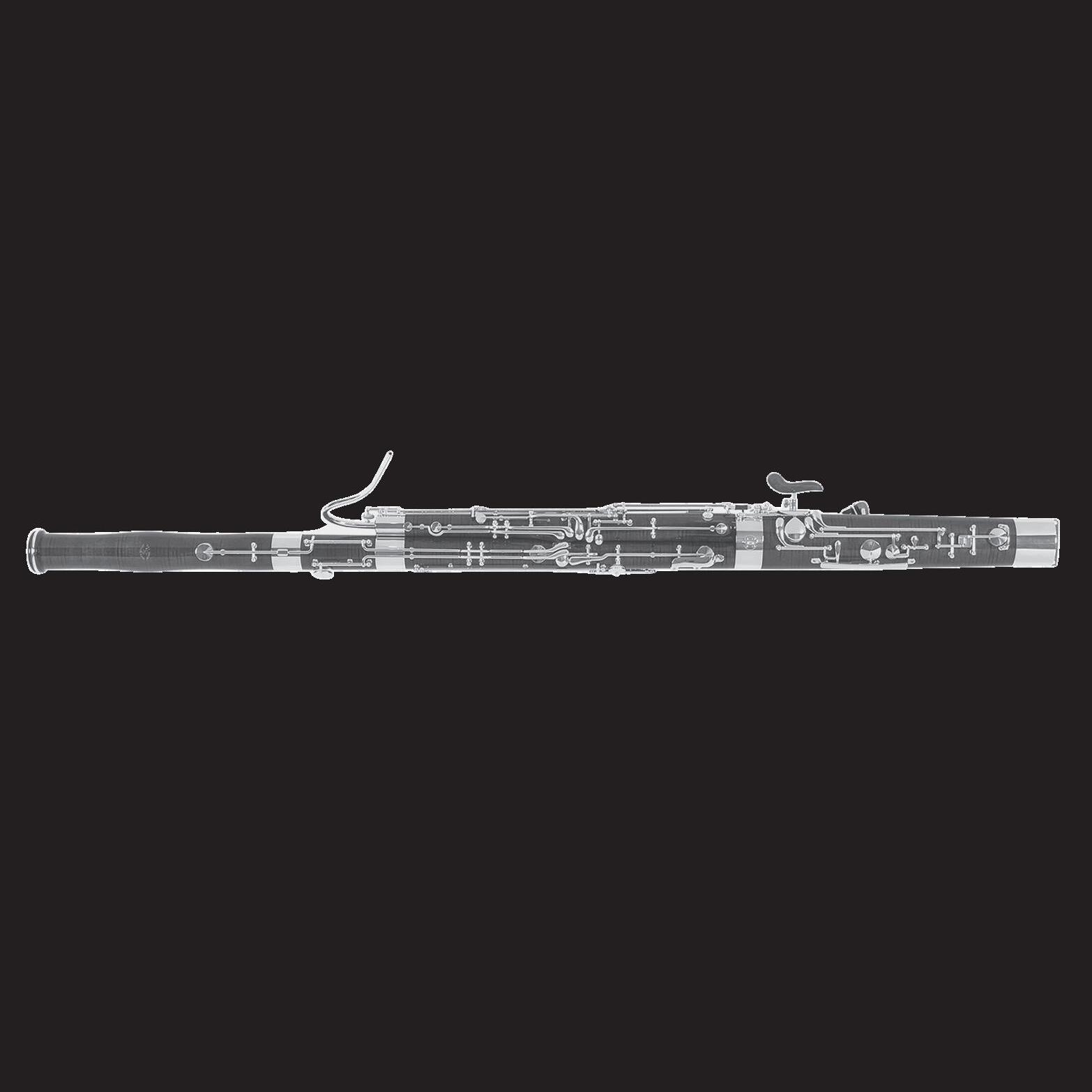

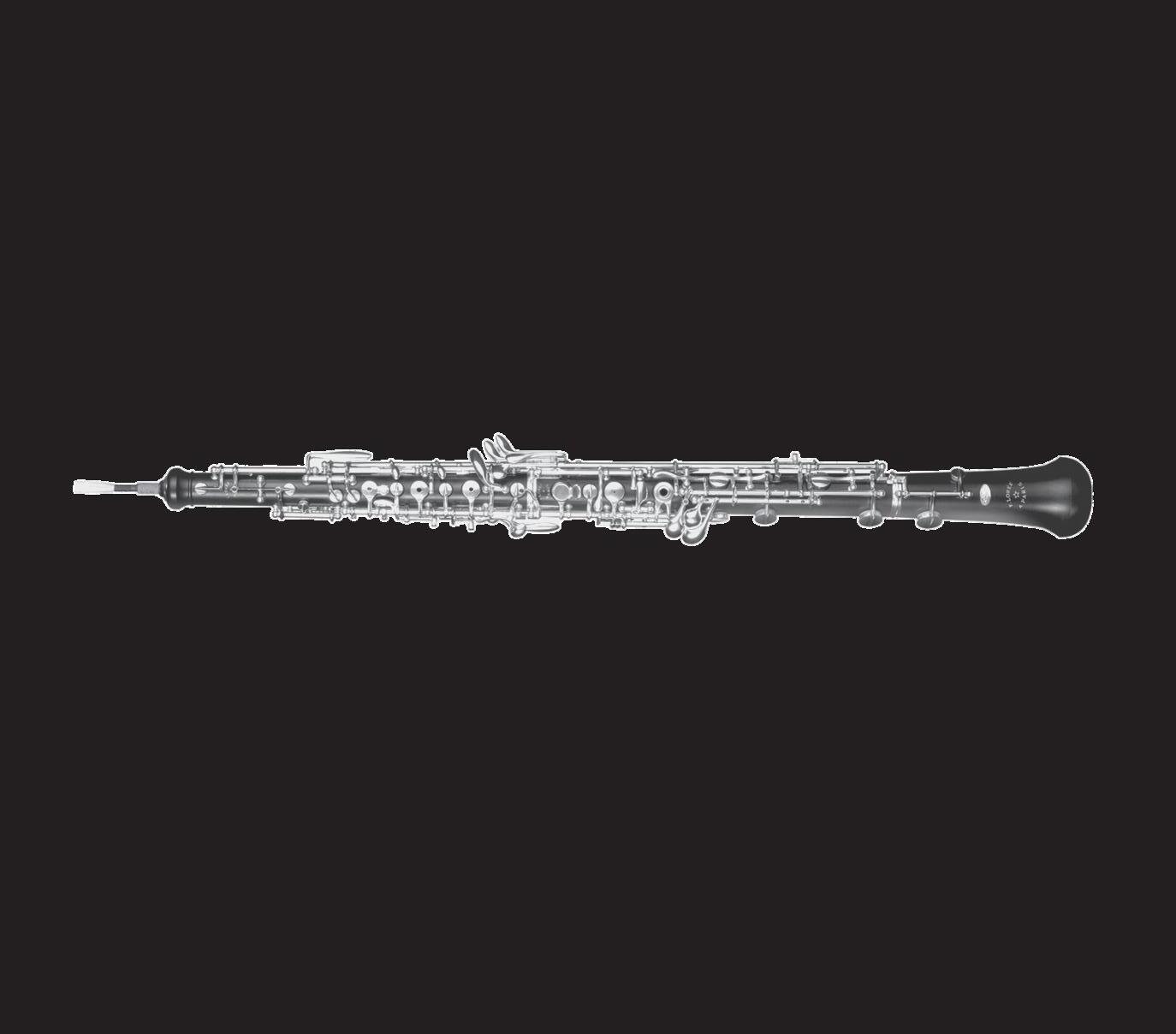
BELIEVING
IN YOURSELF IS THE FIRST SECRET TO SUCCESS
HAVING GOOD EQUIPMENT IS THE SECOND ONE

WWW.BOCALMAJORITYSTORE.COM
REEDS - INSTRUMENTS - DOUBLE REED EDUCATION
forward is the hiring of a digital communications specialist who will help us deliver more advocacy materials online for you to utilize.
I have been involved in music education for 57 years, and advocating for our


programs continues to be a critical part of our work as music educators. In addition to ongoing challenges of multiple elective options, double-blocking for remediation, and competition for a student’s instructional and free time, we now face a philosophical shift about the role the public school should play in educating our children.
Providing a well-rounded education that includes music and the arts has in some cases become secondary to teaching children to read and compute and master the foundation subjects. In the eyes of many parents across our state, nurturing the human spirit and teaching what they see as the “touchy-feely stuff” should not be a part of a school’s mission. Sadly, many local boards of education have adopted this philosophy and limited the support of our programs in many school districts.
So, what can we do to address this dilemma? First and foremost, we must endorse how no academic subject in our state’s curriculum has the good news story to tell that we do. We must take advantage of that by sharing our story with all who will listen. How, then, can you tell your story?
In a first step, go to our website and familiarize yourself with the materials and tools available for your use. Download the wonderful PDF entitled “Why Choose Music?” printed on page 13. It is supported by a PowerPoint presentation that offers an expanded version of that message that you can customize for your program.

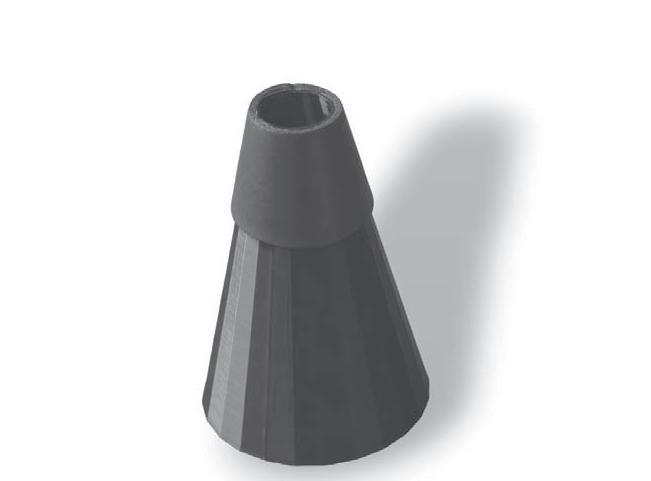

Detailed resources are available that offer guidance on how to be an advocate and how to gain media coverage of your program’s activities and accomplishments. Each is timely and up to date. Other materials available to print focus on College and Career Readiness, how music impacts learning, and the impact of the arts on the economy. Go to www.tmea.org/advocacy/ materials to find these and more.
Many of you will remember the eight videos TMEA produced in 2020 as part of TMEA’s Centennial celebration. These videos share personal stories of the importance of music education from varied perspectives. They are perfect for showing at the beginning of local and Region concerts, booster club meetings, administrator in-service work sessions, PTA programs (especially elementary), and community meetings of all types. While
Prizes per division: First Place $750 - Second Place $400 - Third Place $200 Grand Prize Winner awarded performance opportunities TBD
Deadline: October 31, 2023
Entries are accepted On-Line Only. Piano Rachel Heard Millsaps Conservatory of Music Strings Emily Ondracek-Peterson Diehn School of Music Winds-Brass Mark Kellogg Eastman School of Music
Entry
Information: www.tasovolunteers.com
Presents 27th Annual-Juanita Miller Concerto Competition Sunday, January 7, 2024 Southern Methodist University 10 Southwestern Musician October 2023
Texas Association for Symphony Orchestras
not yet dated in any way, that time will come, so we need to take advantage of their amazing messages now. Most of these videos are also available to download with Spanish subtitles.

Another valued resource for advocating for your program may be found in the Q&A section of Teacher Resources on our website at www.tmea.org/q&a. This bank of hundreds of responses on numerous advocacy-related questions represents valuable knowledge and experience shared by TMEA members. Posts on how to advocate within your community were particularly compelling and plentiful. The database is searchable by topic, division, or both. A worthy aside is the fact that this Q&A section also shares information and teaching strategies on eleven other topics relevant to music education, all submitted by your colleagues throughout the last several years.
The article I mentioned at the beginning of this column is entitled “Boost Support with a Dynamic Brand Identity” and focuses on three simple steps: determining your program’s identity, identifying your target audiences, and reinforcing your brand identity with those target audiences.

I strongly encourage you to revisit this article before you create your why music message. That issue of the magazine is available at www.tmea.org/september2023.
Below are several ways to help you as an advocate. This list may seem overwhelming, so I suggest choosing one or two strategies as you begin or increase your advocacy work.
Create Your Brand
Determine your core values. For example, collaborate with others to achieve musical excellence while building a culture that includes joy and fun and an atmosphere that embraces all students.
Identify Your Audiences
• Determine who the school district’s key decision-makers are who impact your program. This might include the school board members, superintendent, curriculum director, and principals. Knowing who to target your advocacy efforts toward is crucial.
• Identify other relevant audiences such as community leaders as well as parents of elementary-aged children,
and educate them about the value of music education so that when the time comes to recruit for your program, parents are already aware of its value (see the article on page 31 for ideas on communicating to such an audience).
Build Your Message
• Start by collecting data and research that highlights the positive impacts of music education in your program and district. Check our website to gather statistics, studies, and anecdotal evidence that demonstrate how music enhances cognitive development, academic performance, creativity, discipline, teamwork, and the overall well-being of students.
• Develop a clear and concise case for why the music program is important. Highlight the specific benefits it provides to students and the community. Include both qualitative and quantitative information, such as testimonials from students, parents, and teachers, as well as academic research supporting the value of rigorous music study.
• As you build your plan for the why
Doctor of Arts in Music
• Primary Emphasis in Music Education OR Worship Ministry
• 51 credit hour degree with the potential to transfer up to 9 hours from the Masters
• Coursework can be completed in 2 years
• Elective tracks in Leadership, Conducting, Marching Arts, Theology, and More!
Master of Music in Worship Studies
Master of Music Education
• 30 credit hour program that can be completed in one calendar year
• Many elective choices to fit desired learning outcomes
the spring
• Application Deadline is April 15th for the summer and January 15th for
• 32 credit hour program that can be completed in one calendar year CONCENTRATIONS AVAILABLE IN... Worship Ministry, Conducting, Technology & Performance
3 dFù
INFO FULLY ONLINE GRADUATE DEGREES AT AN AFFORDABLE PRICE! Top 10 Most Affordable Online Master’s in Music Degrees according to OnlineU! No Application Fee for Members of NAfME 11 Southwestern Musician | October 2023
@wmcareymusic music@wmcarey.edu FOR MORE
of music study, be sensitive to the components of your program that might counter or conflict with a music program’s value and limit participation, including cost or burdensome time demands.
Tell Your Story
• Collaborate with like-minded individuals who share your passion for music education. Parents, students, teachers, community members, and local musicians can form a coalition to strengthen your advocacy efforts. A united front can have a more significant impact.
• Reach out to decision-makers with personalized emails, letters, or phone calls. Clearly articulate your points and provide evidence to support your
arguments. Share your firsthand experiences and stories that emphasize the positive impact of the music program.
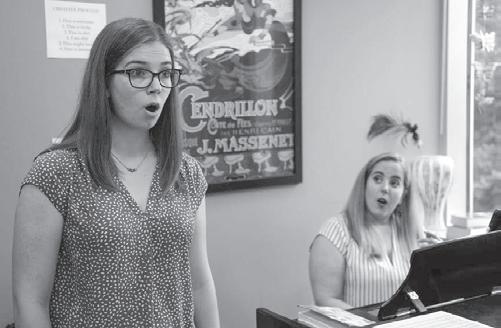
• Attend school board meetings to present your case in person. Many school boards have public comment sessions where you can share your thoughts and concerns. Be concise, respectful, and focused on the benefits of the music program. If possible, have students perform or speak.
• L everage social media platforms and local media outlets to raise awareness about your advocacy efforts. Share success stories, testimonials, and relevant research to reach a broader audience and gain community support. Student videos can be very impactful.
• Organize events or performances that
Scan the code to download the “Why Choose Music” PDF seen on the adjacent page. This PDF and more advocacy materials are available at www.tmea.org/advocacy/materials.
think. perform. explore.
showcase the talents of music program participants. These events can demonstrate the value of the program to the community, and they provide an opportunity for decision-makers to witness the impact firsthand. Never turn down the opportunity to perform. Sharing your students’ musicmaking benefits not just the listening audience but your students as well. One of the primary joys of music study is the opportunity to share one’s music-making with others.
In the end, advocacy efforts can take time, so remain persistent and positive throughout the process. Focus on the benefits and keep working to make a compelling case for the music program. When appropriate, partner with other arts disciplines to rally community support for arts education as a whole.
When you make progress or achieve your advocacy goals, celebrate and acknowledge the successes. This can motivate supporters and sustain momentum for future efforts. Remember, no one can tell your story better than you. 0
Music scholarships available to non-music majors
■ Faculty who focus on undergraduates
■ 16 ensembles, with national and international ensemble touring opportunities
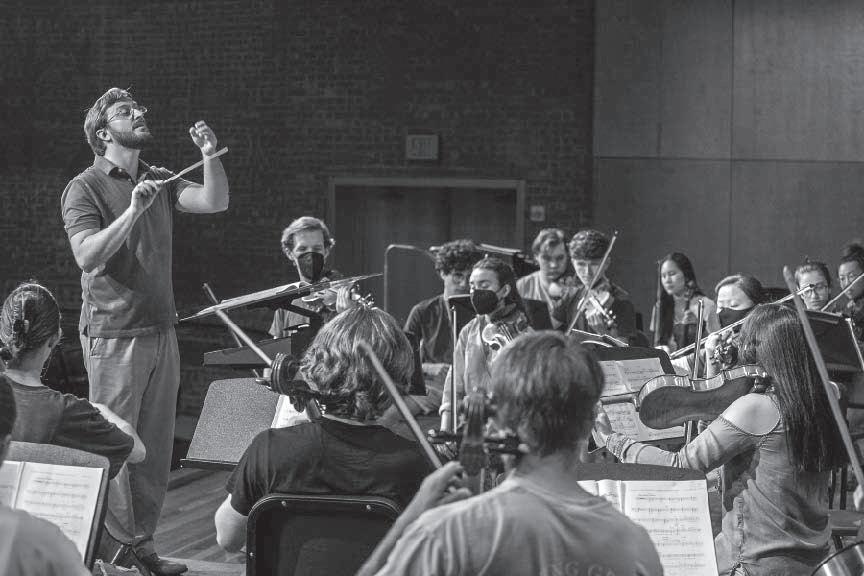



■ Degrees in music education, performance, and composition
■ Master of Arts in Teaching, a 5th year program with a full year of student teaching and 100% job placement (25 consecutive years)
■ Located in culturally vibrant San Antonio
■ Study Abroad opportunities
trinity.edu/music
The Trinity University Music Department is recognized as an ALL-STEINWAY SCHOOL by Steinway and Sons, for its commitment to excellence

12 Southwestern Musician October 2023
WHY CHOOSE MUSIC?
Music students have fun while they learn. They also:








• Experience joy making music with their friends.
• Express their emotions in an inviting and encouraging space.
• Develop musical independence so that music can always be part of their life.
• Build awareness and respect of all peoples through the study of music from many cultures.
• Improve in other academic subjects as well.
• Make lifelong friendships through musical collaboration.
• Learn how to work with others and champion their successes.
• Develop the skills and perseverance needed for success in every future endeavor.
It’s not just about a career in music
“The theory of relativity occurred to me by intuition, and music is the driving force behind this intuition. My parents had me study the violin from the time I was six. My new discovery is the result of musical perception.”1
—Albert Einstein, Theoretical Physicist
“It is in Apple’s DNA that technology alone is not enough—it’s technology married with liberal arts, married with the humanities, that yields us the results that make our hearts sing.”2
— Steve Jobs, Apple Inc. Co-founder
“I believe the foundation for any success I have had is derived more from my music education than my engineering study.”3
—David Borland, Former Amazon Web Services Director of Machine Learning Acceleration
1. Nurtured by Love. A New Approach to Education, Shinichi Suzuki, 1969 2. The New Yorker, Steve Jobs: “Technology Alone Is Not Enough,” October 7, 2011 3. Testimony to the Texas House Public Education Committee, March 9, 2021
13 Southwestern Musician | October 2023
In music, these students found a place where they belong and motivation to excel. Learn more about Emma, Jamsel, Joyce, and Nicholas at www.tmea.org/itstartswithmusic.
TMEA Band Vice-President
Are You Planting Oaks or Daisies?
Like those oak trees, I have watched my friends grow from a position of needing to be nurtured and protected into mature leaders who will nurture and protect others for many years to come.
Just outside our band hall door stands a row of five beautiful oak trees. Their majestic branches stretch across the 70' × 200' yard in which they are centered. The natural canopy they create is a magnet for anyone at the school. The presence of students under the trees is almost as regular as the shade they provide, and while often taken for granted, I think everyone agrees they add substantial functional and aesthetic value to our campus.
I remember seeing the trees for the first time when I accepted my position 19 years ago. If I had written about them then, I would have crafted a different scene. They were planted when the building opened just five years earlier. They were thin, scrubby, and not much taller than the basketball goals in the gymnasium they bordered. In those days, only one or two people could fit under the early morning or late evening shadow they cast. Adjacent to the trees and closer to the building was a flower bed alive with the color of white and purple daisies. They seemed to dance in the coastal breeze and definitely created the lion’s share of curb appeal to the building.
This landscape has evolved before my eyes every morning and every evening for the almost two decades that I have had the honor of teaching my students, and it serves as a constant reminder to keep my priorities straight and my purpose focused. This green space I’ve been describing not only lies outside the band hall, but it is also along the route that students, staff, and I traverse to get to our marching practice field every day in the summer and fall. Eighteen years ago, I started making that walk, around the trees, with two trombone playing students who couldn’t have been more different from each other yet were great friends. One was quiet, methodical, and introspective while the other was an energetic,
October—Renew your membership and register for the convention.
October 5, 6 a.m. CT—TMEA convention housing reservation system opens online.
November 1 —TMEA scholarship online application deadline.
January 6 —Area Band auditions.
January 18 —TMEA convention early registration deadline.
February 7–10 —TMEA Clinic/Convention in San Antonio.
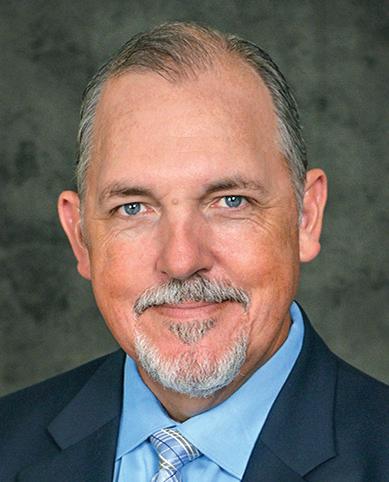
SHANE GOFORTH
YOUR CALENDAR check www.tmea.org for updates
MARK
14 Southwestern Musician October 2023
charismatic risk-taker. They were bound together by a passion for what they did as a band and a love for the people they did it with. It was clear that these young men not only could make an immediate impact on the success of the program, but that they also had incredible futures ahead of them. I certainly wanted to show them the success that their enthusiasm and hard work would bring to our current project, but I knew that would be the easy part. The real challenge would be in planting the seeds that, if nurtured, might grow into longterm success that stems from the philosophy of doing the right things, in the right way, for the right reason.
My previous ten years of difficult and trial-filled experiences had taught me that a fundamental-based process and procedure-driven approach to musical development might feel slower in its infancy but would prove to be exponentially more productive and sustainable with time. More importantly, a decade of teaching showed me that treating every human being, student or otherwise, with the love and respect they inherently deserve produces a positive effect so great that it is incalculable. My work was laid before me, so I set about teaching these two trombone players
the lessons that had established such deep roots in my life—lessons I knew would sustain success in these students as well.
Six years later I found myself walking by those trees that were now a little taller and a bit fuller with those same two trombone students. Now they were working as marching techs, reflecting on their college experience and how their respective professors’ approaches differed from mine. I was incredibly thankful for the relationship we had developed that allowed them to suggest tweaks and changes to our process and ask me to defend the things they knew I held as musical non-negotiables. I was also so grateful for the opportunity to
watch them work with a new generation of students and set an example of the musical and moral values we worked so hard to establish.
In the last few weeks, I have walked in the cool of the shade that our beautiful oaks supply with two brilliant, passionate educators who are more committed to their craft, their students, and their colleagues than anyone I have ever met. They make substantial and sustaining contributions to their professional and personal environments, and I know they will be better teachers than I could have ever dreamed of. I am so blessed to have them teach in our feeder cluster and to get to
TMEA Scholarships
■ High School Seniors
■ Undergraduate Students
■ Student Teachers
■ Graduate Students
Last year, TMEA awarded $207,000 in scholarships to 82 students.

Wellness is all the buzz!
“This invaluable resource... should be required reading for all music educators!”
 — Paula Crider Professor Emerita, University of Texas
— Paula Crider Professor Emerita, University of Texas
“For the lifelong benefit of yourself and your students, read this book and spread this knowledge to every musician you know.”
— C. Callan Freelance musician
November 1 Deadline tmea.org/scholarships
Author, Dr. Nancy Taylor is a professional musician, educator, and Board-Certified Occupational Therapist. She combines her expertise to provide a practical and scientifically sound guide for teaching injury prevention to musicians. A former member of “The President’s Own” United States Marine Band, Dr. Taylor is an Associate Professor at the University of Texas at El Paso, Principal Trumpet with the El Paso Symphony Orchestra, and an internationally recognized clinician for her work in musician’s wellness.

the key to teaching actionable strategies for recognizing and preventing injury while promoting wellness through practical habits.
Discover
or click to purchase online
Scan
15 Southwestern Musician | October 2023
work with and learn from them every day.
Like those oak trees, I have watched my friends grow from a position of needing to be nurtured and protected into mature leaders who will nurture and protect others for many years to come. I have no doubt that many generations of students will benefit from the beauty and shade of the trees and the teaching and love of my colleagues long after I’m gone.
Like my students’ short-term competitive successes, the flower bed with the dancing daisies has long been forgotten. That entire area has been overtaken by a mature hedge and is covered in mulch twice a year. However, after 24 years of hurricane winds, flood, and drought, those trees are stronger and more beautiful than ever. As we dig into another school year and consider the what, when, where, how, and why of our programs’ goals, I encourage you to ask yourself, “Am I planting
trees or daisies?” And no matter where you are on your journey, please make time to stop and enjoy them both.
TMEA
Clinic/Convention Update
I hope you will plan to make the 2024 TMEA Clinic/Convention a part of your journey of growth and development. We have an outstanding program of worldclass clinics and concerts scheduled that I am sure will both educate and inspire.



At www.tmea.org, you can review a list of the 300+ clinics and learn what Honor and Invited ensembles will be performing concerts during the convention. In addition to this, there will be over 50 music showcases performed in open areas of the convention center.
During the convention, you can learn from our amazing All-State Conductors during open rehearsals on Thursday and Friday. I’m excited to announce the

following conductors will be leading our division’s seven TMEA All-State ensembles. Go to www.tmea.org/2024conductors (or scan the QR code below) to read about each of these amazing musicians!
• Sy mphonic Band: Jason Fettig, Univ of Michigan
• Concert Band: Rebecca Phillips, Colorado State Univ
• 5A Symphonic Band: Nicholas Enrico Williams, Univ of Georgia
• Jazz Ensemble I: Ellen Rowe, Univ of Michigan
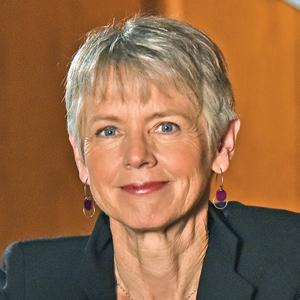


• Jazz Ensemble II: Scotty Barnhart, Florida State Univ, Count Basie Orchestra
• 6A Percussion Ensemble: John Parks, Florida State Univ
• 5A Percussion Ensemble: Scott Herring, Univ of South Carolina 0
TMEA Clinic/Convention BAND DIVISION
54 Band Division Clinics
11 Invited & Honor Band Concerts
Band Division All-State Conductors
All-State Rehearsals Are Learning Opportunities
Open All-State rehearsals during the convention are amazing opportunities for professional development. Observe nationally recognized conductors prepare an extraordinary concert in three days.
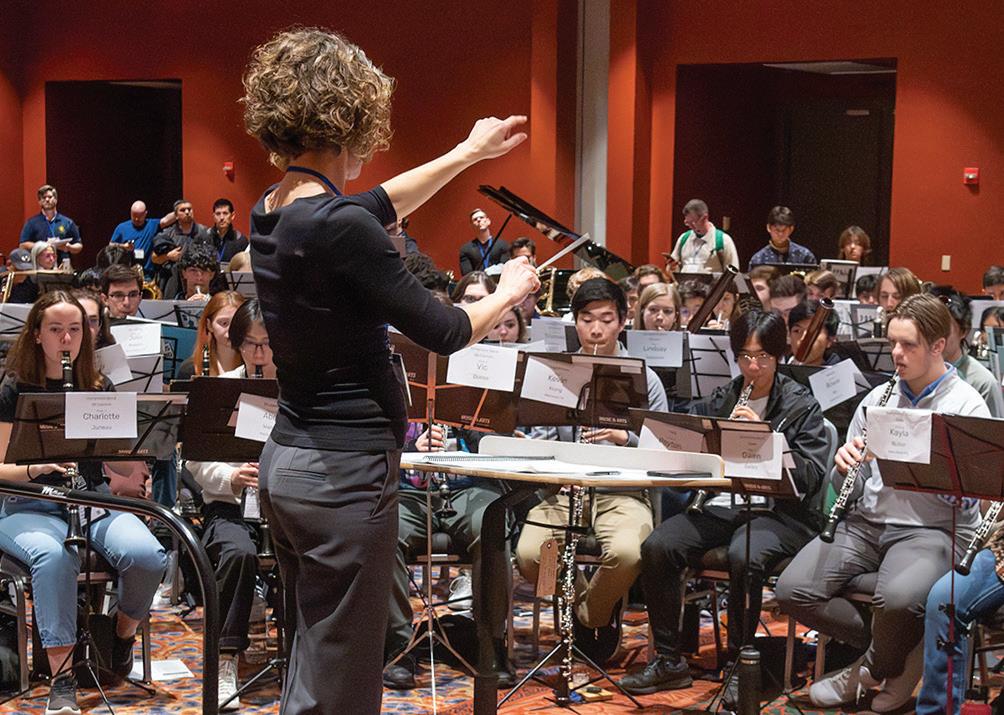
WWW.TMEA.ORG/CONVENTION
•
Symphonic Band
Jason Fettig
Jazz Ensemble I
Ellen Rowe
Concert Band Rebecca Phillips
Jazz Ensemble II
Scotty Barnhart
5A Symphonic Band Nicholas Williams
Learn More tmea.org/2024conductors
6A Percussion Ens. John Parks
16 Southwestern Musician October 2023
5A Percussion Ens. Scott Herring
SOUND IDEAS
BAND: Better Performances Through Ear Training
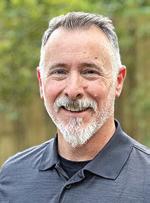 by tom harrington
by tom harrington
Intonation problems can be a frustrating distraction in an otherwise solid performance. Students who don’t have strong intonation skills may have more than the usual issues on stage. The short answer to fix this problem is ear training. But putting that into practice is a bit more involved. Fixing pitch for wind players also involves sound quality, technique, and knowledge of the instrument.
Raising young musicians to consistently play with good intonation starts at the beginning. Beginners who sound great and are set up well on their instrument typically find it easier to tune as they mature. You’ve probably heard that you can’t tune a bad sound. It’s true. And as a side note, it’s also hard to balance. Great sounds, however, tune and balance much more easily.
It’s important not to neglect embouchure strength and flexibility. As students move around their instruments more efficiently, they gain the fine motor skills necessary to make small changes in pitch. Scales, lip slurs, and register exercises can help students develop the skills to place notes correctly in the center of the pitch once they know how. Don’t rush these exercises—students who aren’t ready to play advanced techniques will develop bad habits that are harder to break later.
Ear Training During Fundamentals
Practice ear training on a regular basis during your fundamentals routine. Like everything else we want our students to do well, playing in tune needs to be explained before it’s practiced. Take time to demonstrate good and bad intonation and explain the difference between just intonation and equal temperament. For practice, I suggest the method book Essential Musicianship for Band–Ensemble Concepts by Eddie Green, John Benzer, and David Bertman. Its exercises move students up and down through intervals against a drone on the tonic. They are progressive, and with your help, give students the opportunity to begin to understand what it sounds like to play basic intervals correctly.
I suggest initially utilizing an electronic drone (e.g., Yamaha Harmony Director or the Tonal Energy app connected to a good speaker). Later, students who can hold a reliable and steady pitch can take turns providing the drone. This is good to start in small groups as it’s easier for them to find each other’s pitch center. Sectionals are a wonderful time to work on ear training.
As students practice playing good unisons, thirds, fourths, and
fifths, you’re on your way! Additionally, teach students to play a melody with a tonic drone and work to play correct intervals along the way. Keep practicing these skills multiple times each week all year so students become proficient and spoiled by a greatsounding band.
For help in teaching them to build and balance chords, I suggest reading Tuning with Technology by John M. Denis and Jordan C. Stern. This is an excellent and comprehensive guide to interval adjustments as well as learning where students need to compensate for the tuning tendencies of their instrument.
Ear Training During Rehearsal
Once students have had some practice playing in tune, your job during rehearsal involves giving them opportunities to fix problems themselves whenever possible. Get into the routine of stopping and holding the final note of a rehearsed section—the resolution of a phrase or the first note of the next phrase. To give them time to adjust problem notes in the middle of a phrase, tell them to hold any specific note you have identified and check it with a drone. This gives them time to adjust on their own. When needed, take the time to hear individual sections and check these arrival notes.
Lastly, chorales can be utilized effectively in your students’ development. I grew up playing chorales, and they are great for teaching ear training, balance, and phrasing. I believe chorales offer more advanced ear-training exercises because the SATB chords change every note, presenting a constantly moving target. So, while they are mostly easy chord progressions, it becomes more advanced once you think about what is required of the student.
Kids are smart, and they want to do well. They’ll likely focus on sounding better once they have the required skills and knowledge, so give them a chance to hear intonation problems and the time to fix them. They will start to develop ownership over the process and feel empowered, knowing they are helping their band sound better.
0
Tom Harrington retired after a 33-year career as a Texas band director, most recently serving as director of bands at Cypress Woods HS (Cypress-Fairbanks ISD).
17 Southwestern Musician | October 2023
Strategies for Success in Low Socioeconomic Schools
Opportunity Challenge
By Carly Addison
Music educators recognize the transformative power of music programs, especially for students in low socioeconomic schools. Yet, a recent national study revealed that access to music education is limited in communities with high percentages of students eligible for free or reduced-price meals1. As someone who attended lowincome schools and has taught exclusively in middle and high schools where over 80% of the students came from low-income homes, I aim to reframe these challenges as opportunities and provide strategies for successful instruction in these environments.
Common concerns among educators in these situations include the lack of private instruction, administrative understanding, and discipline issues. Before addressing those, it is crucial to establish a strong foundation in the classroom that supports success.

Classroom Environment
Creating a highly structured environment while demonstrating that students are deeply valued is essential for teachers in low-income schools. As a student and teacher, I experienced that financial struggles at home can often lead to insecurity in simple daily routines that can then manifest in behavior issues.
Clear and consistent routines and procedures are necessary. For example, students should know what to expect each day in your classroom. For me, this involves repetition in the first six weeks on how we speak, stand, play, case up, store backpacks, mark our music, and many other small details. I am clear about behavior expectations with reasonable rewards and consequences. Engage students by minimizing downtime, turning instruction
into games, and delivering concise instruction.
Once a structured classroom is established, the next step is to let your students know you value them. The easy yet problematic solution is to be their friend. That isn’t your role as an educator. They need you to be an excellent teacher and mentor. Building relationships with students involves holding them to high standards and providing them tools to meet those expectations.
Start by making your room a safe place to make mistakes. Public humiliation when a student misses a note or a rhythm might shape a better player, but it won’t shape a better person. Remove sarcasm from your communication, especially starting out. Joking with an ensemble can happen without it being at anyone’s expense. Each day, ask your students a few get-to-know-you questions. In addition to sectionals, create times before or after school for fun. The long road of becoming a safe adult over being a cool teacher will serve you and your students best.
Making Private Instruction Accessible
A lack of private instruction is often seen a barrier to ensemble success. To address this, consider implementing peer instruction between grade levels. There are some things you can delegate to older students and others you can’t. For example, beginner technique setup should be teacher-led, but helping a sixth grader with a tricky eighth-note rhythm is an excellent task for a responsible eighth grader. Upper-level students can offer peer tutoring to students in lower-level classes as student aides or outside school hours in tutorials where the older student receives volunteer hours. Many campuses already have student aide courses coded, so visit
18 Southwestern Musician October 2023



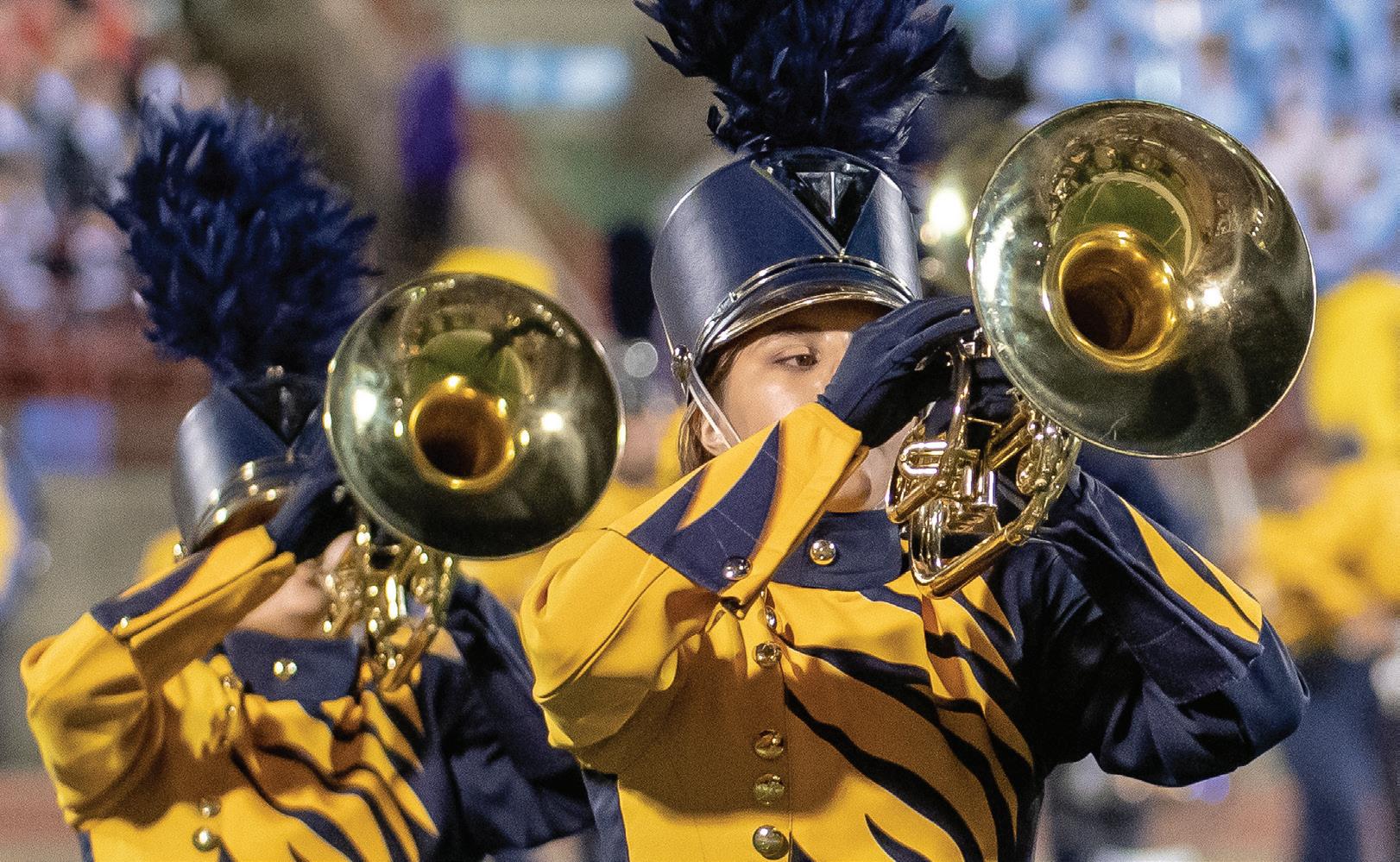

@TAMUCMusic • @TAMUCBands • @TAMUCChoirs tamuc.edu/music • 903-886-5303 2024 Admission & Scholarship Audition Dates: November and January audition dates are available upon request. Auditions are required of all entering and transferring music majors and minors.
17
24 March 9 April 6 (Instrumental Non-music Majors only) PERFORMANCE PASSION PRIDE A Member of the Texas A&M University System DEPARTMENT OF MUSIC An All-Steinway School with Spirio Designation OFFERING BACHELOR’S AND MASTER’S DEGREES IN MUSIC EMPHASIZING MUSIC EDUCATION OR PERFORMANCE
February
February
with your counselor to enroll student aides in your classes.

For upper-level groups, I encourage group lessons with teachers who are willing. While a $50–$70 private lesson every week is financially out of the question, students might take a group lesson for $5 to $10 per person, at least during competition and audition seasons. A local college or graduate student can be an excellent group lesson or masterclass teacher.
The buddy system can be another valuable tool. Sitting in pairs and having students learn things with a partner provides many benefits, including additional instructional time, peer support, easier assessment, and faster feedback. Learning music is such a vulnerable thing, so when you can, turn it into a team activity.
Developing Administrative Support
Developing administrative support can be challenging, as administrators may prioritize test scores and behavior over fine arts. It’s helpful to unite with others in your fine arts department by grading, disciplining, and recruiting in the same way, if possible. Principals interact with their campus by department, especially at the high school, so being approached by every elective/fine arts teacher on your campus, each with a different agenda, can be overwhelming.
Assist your administration by being a fine arts team. Support your students’ success in their foundation courses and participate in school activities to build relationships. Avoid scheduling program activities during testing windows.
Handling Discipline
Discipline can be a struggle, especially when administrators may not fully understand or support teachers. When you can, handle your classroom discipline yourself. When we push a problem to our administrator, we often compromise our authority and our relationship with a student. Start with a question or pause when addressing misbehavior, as many issues stem from thoughtlessness rather than intention. If
a simple redirection doesn’t suffice, avoid engaging in power struggles in front of the class and have conversations privately.
Having established consequences for minor offenses helps me keep class moving and avoid making empty threats. Don’t withhold education as punishment. When your classroom is a positive place to be, peer pressure will land on your side, and if you’re forming relationships, the knowledge of your students’ backgrounds will aid in predicting and preventing behavior pitfalls.
It helps to keep in mind that most of our students’ out-of-line behavior has nothing to do with you. It’s not personal. Often students have learned a negative teacher–student dynamic long before our classroom, and it’s simply another process to teach. Clearly communicate zerotolerance actions and ensure severe violations are addressed according to campus procedures.
Making Music
Finally, solid music education pedagogy is crucial for success. Teach fundamentals

thoroughly and accurately. In a program with no private instruction, what we allow in our beginner classroom will be the sound in our top ensemble. Provide differentiated instruction for students with varied skill levels. For the students who catch on quickly to a new concept, have a “level-up” version, and be willing to slow down or find another way to approach a technique or concept that’s not working for most students. Invite trusted colleagues to troubleshoot your ensemble and instruction. This is essential for directors who don’t benefit from a team of music educators on their campus.
These strategies are based on personal experience and aim to help close the equity gap for underserved students. If you are a teacher who is struggling, reach out to someone established in this profession. More than ever, we need teachers deeply invested in every student, and we serve ourselves and our students best by leaning on one another. 0
References
1. Arts Education Project (2019). National Arts Education Status Report 2019. Retrieved from https://artseddata. org/national_report_2019/.
Carly Addison is the Orchestra Director at Irving HS (Irving ISD).
WITH FEATURED GUEST PERFORMERS Boston Brass & Timothy McAllister, Saxophone Soloist THURSDAY, FEBRUARY 8 • 8 P.M. • LILA COCKRELL THEATRE Purchase $20 general admission tickets when you register for the convention or anytime following by returning to your member record to add this purchase. www.tmea.org/presidentsconcert 21 Southwestern Musician | October 2023
To
access additional materials on this topic, scan this code or go to www.tmea.org/addison2023.
TMEA President’s Concert
TMEA Orchestra Vice-President JENNIFER MARTIN

Feeling Frustrated?
Acknowledging there are variables you can’t currently control can take some of the pressure off and allow you the perspective shift needed to find the control you do have.
Frustration: the feeling of irritability or anger because of an inability to achieve something or because a situation does not go as you expect. I would add that it can be a feeling of resentment when something is not done the way that is best, fair, or just. This might be one of the most insidious emotions that can build up and leave us feeling depleted, tired, angry, or burned out. It seems that even as infants, we deal with feelings of frustration. I remember long nights spent rocking my daughter as she cried incessantly in frustration over that moment’s unmet need. My husband and I felt equally frustrated that we couldn’t figure out what she needed. Those long nights left us feeling sad, exhausted, and powerless. Frustration can also set in when we know exactly what we need but don’t have the means, resources, or power to make it happen.
Teaching music is a marathon, not a sprint, and it is inherently filled with frustrations. In recent years it seems those frustrations have caused more educators to run out of steam earlier in the race. In my humble opinion, I don’t believe the root of the problem is the late nights, long weekends, or even the pay. I believe it is the unexpected roadblocks that get in the way of our progress, leaving us feeling tired, angry, or burned out. So how can we stay refreshed and encouraged? There are no
October—Renew your membership and register for the convention.
October 5, 6 a.m. CT—TMEA convention housing reservation system opens online.
October 15 —Honor Orchestra Parts B & C and the recording due for HS String.
November 1 —TMEA scholarship online application deadline.
January 18 —TMEA convention early registration deadline.
February 7–10 —TMEA Clinic/Convention in San Antonio.
MARK YOUR CALENDAR check www.tmea.org for updates 22 Southwestern Musician October 2023

easy answers, and I don’t presume to have it all figured out, but I will offer what has worked for me.


Identify what you can control. If you think about it, our frustration is often born from situations we can’t control. If you could control how hard your students work, how much they practice outside of class, or the master schedule, budget, the quality of your instruments, or the testing calendar, you could make some big impacts quickly! In reality, there are variables we don’t have direct control over, even though we have a solution that is bal-



anced and equitable. It’s maddening and, well, frustrating!





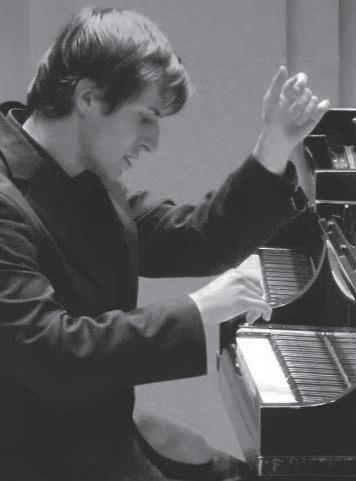





It may seem insignificant, but small and continual progress has a way of building momentum and compounding achievement more than we might expect. Continue to advocate and build relationships to effect change. However, acknowledging there are variables you can’t currently control can take some of the pressure off and allow you the perspective shift needed to find the control you do have. There is always something you can do.
Find a group of like-minded friends in




the trenches with you to share and support. My “ride or die” group has saved my sanity multiple times either through our group chats or our occasional dinners. Be there for each other to vent, laugh, cry, and scream, but also keep each other accountable to work it out without wallowing in it.
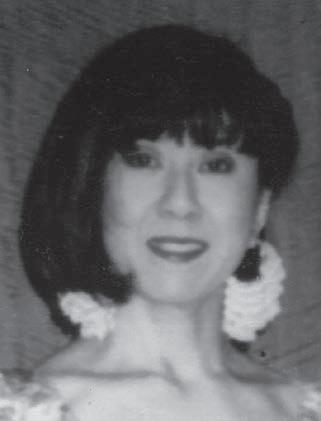
With your group, be sure to respect the fine line between venting and complaining. Venting can be healing and refreshing, as we release those feelings that have been bottled up and our friends validate them. The goal is to feel lighter by letting go. Complaining might begin in the same

European Pastries since 1990 Wedding Cakes • Birthday Cakes Party Trays
12th Mika Hasler Competition Final 10 Sunday, January 14, 2024 First Prize: $10,000 Second Prize: $5,000 Deadline for application: December 17, 2023 All instruments may apply Age: Under 25 by December 17, 2023 Winners Concert: Sunday February 11, 2024 Duncan Hall, Rice University Apply online at: www.mikahaslercompetition.org
Mika Hasler Competition Foundation
24 Southwestern Musician October 2023
way, but instead letting go of anything, you hold onto all your frustrations and still feel heavy, drained, and depleted. You have control over which version you choose and how that affects you.
Again, teaching music is a calling that is a marathon, not a sprint. Appreciate and celebrate successes, minor and major. Most of us will be blessed with some amazing big successes along the way, but those aren’t enough to sustain us. The small successes might be what you and your students cherish the most during the back half of the marathon!
Convention Updates
I want to encourage you to register for the TMEA Clinic/Convention if you haven’t already. It’s a perfect retreat from our usual routines and provides supercharged learning, inspiration, and encour-

agement from colleagues—and great music, too! Go to www.tmea.org/register for more information.
The TMEA housing reservation system opens October 5. Early that week, TMEA will email members the preferred URL to use on that first day for best website performance.
The Orchestra Division still needs more volunteers to make our convention a success. Register at www.tmea.org/ orchestravolunteer to offer a little of your time in service. As a volunteer, you’ll also develop vital connections with other directors in our division.
I am excited to announce the fantastic lineup of our division’s All-State ensemble conductors. These conductors will be instrumental in creating the life-changing opportunity that being a TMEA All-Stater provides, and you can learn from them
during open rehearsals on Thursday and Friday:
• Symphony Orchestra: John Devlin, Wheeling Symphony Orchestra
• Philharmonic Orchestra: Tammy Su
Yi, Youth Orchestra of Los Angeles and Chapman University

• Sinfonietta Orchestra: David Eccles, Lovett School in Georgia
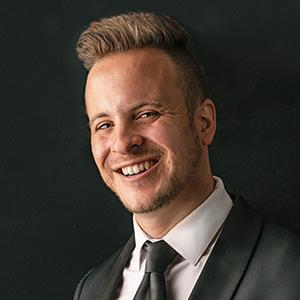
• Mariachi: Alberto “Beto” Jimenez Maeda, Mariachi Torres in California

To learn more about these conductors, go to www.tmea.org/2024conductors (or scan the QR code below). Looking forward, next month, I will begin featuring our Honor and Invited Ensembles whose concerts you can look forward to attending. For a list of all 2024 Invited and Honor Ensembles, go to www.tmea.org/2024concerts. 0
TMEA Clinic/Convention ORCHESTRA DIVISION
42 Orchestra Division Clinics and Honor/Invited Concerts
Orchestra Division All-State Conductors
All-State Rehearsals Are Amazing Learning Opportunities
Open All-State rehearsals during the convention are amazing opportunities for professional development. Observe nationally recognized conductors prepare an extraordinary concert in three days.
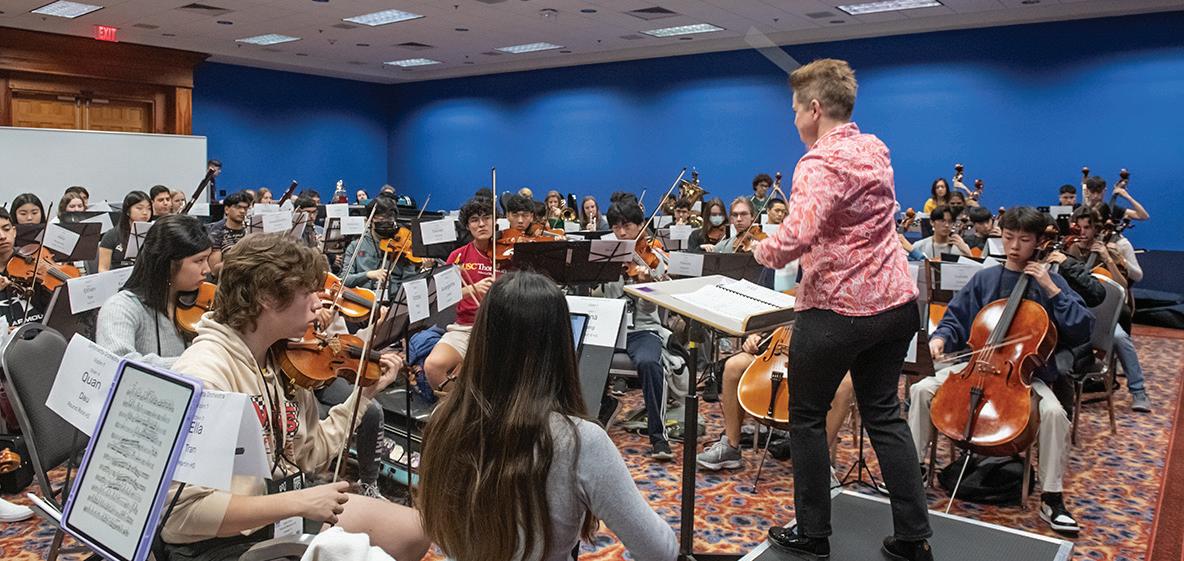
WWW.TMEA.ORG/CONVENTION
Symphony Orchestra John Devlin
Sinfonietta Orchestra David Eccles
Learn More tmea.org/2024conductors
Philharmonic Orchestra Tammy Su Yi Mariachi Ensemble Alberto “Beto” Jimenez Maeda
25 Southwestern Musician | October 2023
SCAN FOR DETAILS ON ALL MUSIC MAJORS!
ENSEMBLE SCHOLARSHIPS AVAILABLE FOR NON-MAJORS!

SPECIAL OPPORTUNITIES FOR SCHOLARSHIPS IN MUSIC EDUCATION!
okcu.edu/music

SOUND IDEAS
ORCHESTRA: Developing Technique Through Warmups
by kevin black
As I begin my 30th year as a Texas orchestra director, I still get overwhelmed by my idealized expectations for my career and my students’ success. I often set goals that lead to opportunities to perform outside our community, whether for All-Region, All-State, Honor Orchestra, or other unique performances. These lofty competition-centered goals can, however, rob students of opportunities to grow as successful musicians.
In my early teaching days, my mindset for rehearsals was solely on concert preparation. Through trial and error, I realized my students were unsuccessful because they needed to first develop the necessary techniques that would help them grow to play such elevated literature.
I aim to build student understanding that will enable them to learn beyond my classroom. This is done, in part, by showing them how and what to practice. My younger years were misspent simply filling the time allotted for practice. I didn’t know how to practice, so I did not improve, nor was I able to create the perfect musical sentence. As a colleague of mine says, “If you don’t have the language to speak, it doesn’t matter how profound your thoughts are.” Therefore, the inability to master a specific technique will make the most extraordinary musical mind mute.
In my first year of graduate study, my teacher had me step back, shed my bad habits, and begin again. I wanted to jump right in and play the Dvořák Cello Concerto, but it was only possible once I closed my technical gaps. Our students also want to jump into the music. We must make it part of our culture to build the technique that allows us to be more efficient in learning the music. In his book Piano, pianist and composer Louis Kentner said, “There is no such thing as a difficult piece. A piece is either impossible or it is easy. The process whereby it migrates from one category to the other is known as practicing.” We must determine whether our students possess the technique necessary to perform a piece with ease or will find it impossible because they need those skills.
Warmup/Technique Format
We utilize the following format to guide this initial time in our daily rehearsals:
Stretching:
• Prepares our bodies for physical exertion.
• Relaxes muscles to prevent injury.
• Strengthens muscles that help us gain control over technique.
Tuning:
• Tuning grants another opportunity to train students’ ears.
• Electronic tuners are a fantastic resource, but we must balance the concept of tuning by eye with our goal of tuning by ear.
• Our students individually adjust their tuning by matching to drones in fifths. Then we have them confirm by playing together, again in fifths. It is easier to tune in harmony than it is in unison or octaves. We allow them to use their tuning device as confirmation only after we’ve done this.
• As the year progresses, they need their electronic tuners less and develop better tone production. A resonant long tone supports our ability to tune better than a short, pinched tone does.
Technical Exercises:
• Plan more time for teaching new techniques. As they gain control, you will use less time explaining the goals.
• We utilize more than half our time focusing on bow control, incorporating exercises that focus on rhythms, dynamics, and articulations—the qualities that foster musical expression.
• Alternate with left-hand technique: vibrato, finger patterns, scales, shifting, and alternate fingerings for varied color.
With technical training, we must remember to scaffold the exercises and celebrate the benchmarks. We must be consistent because we aim for progress, not regression. We must also vary our activities to prevent boredom. What can we do differently to propagate motivation and realize growth? Can we scaffold and change just one thing? Or can we change the exercise altogether, still advancing toward the same goal?
The most important thing I’ve learned is to be satisfied with small gains. We teach our students to think through problems and foster creative solutions. At first, we guide them on how to practice. However, the loftier goal is to empower them to create a system through which they meet their goals.
Learning to play an instrument is an incredibly challenging endeavor. If we allow students to continue practicing at the same level, we can’t be surprised when they don’t improve. We grow only when we do the hard things. Teach them to set high expectations and create a plan to propel them there. 0
Kevin Black is Co-director of Orchestras at Clear Lake HS (Clear Creek ISD).

27 Southwestern Musician | October 2023
Congratulations to the 2023 MARK OF EXCELLENCE NATIONAL WINNERS!
WIND BAND
CLASS A
Coleman MS Symphonic Band David Ingram Waxahachie, TX
Colleyville MS Honors Band Lauren Jones Colleyville, TX
Filemon B. Vela MS Symphonic Band................Mario Sarmiento Brownsville, TX
Grapevine MS Honors Band Jennifer Gish Grapevine, TX
Grisham MS Honors Band Mason England Austin, TX
Maus MS Wind Ensemble Katie Lewis Frisco, TX
McAnally MS Honors Band Joey Qualls Fort Worth, TX
McCracken MS Symphonic Band Chip De Stefano Skokie, IL
Nolan Ryan JHS Symphonic Band 1 Haley Tolhuizen Pearland, TX
Shadow Ridge MS Honor Winds..............Ross Patterson & Adrienne Schuster Flower Mound, TX
CLASS AA
Aledo MS Honor Winds Simon Bosch Aledo, TX
Arbor Creek MS Honors Band Kimberly Beene Carrollton, TX
Artie Henry MS Honors Band Robert T. Herrings, III Cedar Park, TX
Berry Miller JHS Honors Band Chris Bennett Pearland, TX
Canyon Vista MS Honors Band Jay Hagy Austin, TX
Cedar Park MS Symphonic Band
Britni Hummel......................................... Cedar Park, TX
Central MS Honors Band Moisés A. Garza Harlingen, TX
Danielson MS Wind Ensemble Andrea Gonzalez Leander, TX
Jackson MS Honors Band Corey LaMon Graves Forney, TX
Joe M Adams JH Honors Band
Darlene Blose Fulshear, TX
Keller MS Wind Ensemble David Puckett & Richard Alvarado Keller, TX
Kerr MS Honors Band
Catharine Klein Burleson, TX
Killian MS Honors Band Trevor Ousey Lewisville, TX
Kranz JHS Honors Band.....................................Kelby Koch Dickinson, TX
Leo Adams MS Wind Ensemble Stephanie Northam Haslet, TX
Nimitz MS Honor Band
Jordan Freeman Odessa, TX
Pioneer Heritage MS Wind Ensemble Rachael Davis................................................... Frisco, TX
Rushing MS Symphonic Winds Jarred Dodd Prosper, TX
Scoggins MS Wind Ensemble Adam Davis McKinney, TX
Tex Hill MS Honors Band Charles Agueros San Antonio, TX
Walsh MS Honor Band Jennifer Bergeron Round Rock, TX
Willow Wood JHS Honor Band Jim Shaw Tomball, TX
Wilson & Young Symphonic Band Tyler Owen Odessa, TX
CLASS AAAA
Kinder HSPVA Symphonic Band Connor Fetting Houston, TX
Miami Arts Studio Wind Symphony Erich S. Rivero & John Bixby .........................Miami, FL
CLASS AAAAA
Aledo HS Wind Ensemble Joey Paul Aledo, TX
Forney HS Wind Ensemble Cody Newman Forney, TX
Friendswood HS Wind Ensemble Brett Nelson Friendswood, TX
Jack C. Hays HS Wind Ensemble John Rauschuber Buda, TX
Lone Star HS Wind Symphony Mark Poole Frisco, TX
Midlothian HS Wind Ensemble Larry Doran Midlothian, TX
Summit HS Wind Symphony Travis Whaley Arlington, TX
Youth Performing Arts School Wind Ensemble..Dr. Kevin Callihan Louisville, KY
CLASS AAAAAA
Allen HS Wind Ensemble Philip Obado Allen, TX
Braswell HS Wind Symphony Aaron Snipes, III............................................. Aubrey, TX
Clear Lake HS Wind Ensemble John Pearce Houston, TX
College Park HS Wind Ensemble Jeffrey P. Gorring The Woodlands, TX
Glenda Dawson HS Wind Ensemble..................Aaron Brown Pearland, TX
Rock Hill HS Wind Symphony Nathaniel Neugent Frisco, TX
Sachse HS Wind Ensemble Holly C Taylor Sachse, TX
Vandegrift HS Wind Ensemble Katherine VanDoren Austin, TX
Vista Ridge HS Wind Ensemble Bryan Christian Round Rock, TX
Westwood HS Wind Ensemble Thomas Turpin Austin, TX
Wylie HS Wind Symphony.................................Todd Dixon Wylie, TX
NEW MUSIC DIVISION
Burleson HS Wind Ensemble Brandon Day Burleson, TX
Lone Star HS Wind Symphony Mark Poole....................................................... Frisco, TX
McNeil HS Wind Ensemble Jason Dimiceli Austin, TX
Wylie HS Wind Symphony.................................Todd Dixon Wylie, TX
Youth Performing Arts School Wind Ensemble Dr. Kevin Callihan Louisville, KY
Berry Miller JHS Honors Band Chris Bennett Pearland, TX
Irons JH Wind Ensemble Michael Dick Conroe, TX
McCormick MS Wind Ensemble Cristian Lira Buda, TX
Pearland JH West Honors Band Meredith Bishop Pearland, TX
Special thanks to adjudicators Steve Peterson, Nicholas Enrico Williams, Gary Green, Gary Hill, and Tim Rhea.
ORCHESTRA
MIDDLE SCHOOL STRING ORCHESTRA
Canyon Vista MS Honors Orchestra Ragan Whatley & Emily Hornbake Austin, TX
Curtis MS Chamber Orchestra Amanda Su Allen, TX
Ereckson MS Chamber Orchestra Joanna DeVoto & Rachel Boone Allen, TX
Fort Settlement MS Chamber Orchestra Angela Peugnet & Roger Vasquez, Jr. Sugar Land, TX
Fowler MS Legacy Orchestra Victoria Lien Plano, TX
Sartartia MS Honors Orchestra Heather Davis & Fernando Medina Sugar Land, TX
Seven Lakes JH Chamber Orchestra Jennifer Gingell & Bethany Hagin Katy, TX
Smith MS Chamber Orchestra Nassar Edwards............................................. Cypress, TX
MIDDLE SCHOOL FULL ORCHESTRA
Curtis MS Symphony Orchestra Amanda Su, Clint Schaefer, & Amy Gearhart Allen, TX
Lawler MS Legend Symphony Orchestra Christian Holzer, Christine Lalonde Frisco, TX
Shadow Ridge MS Symphony Orchestra Meredith Riddle Flower Mound, TX
Congratulations to the 2023 MARK OF EXCELLENCE NATIONAL WINNERS!
HIGH SCHOOL STRING ORCHESTRA
Allen HS Chamber I Orchestra David DeVoto Allen, TX
Jordan HS Sinfonia Orchestra............................Kyle Davis Fulshear, TX
North Gwinnett HS Chamber Orchestra.............David Metrio Suwanee, GA
Seven Lakes HS Sinfonia Orchestra Desiree Overree Katy, TX
Summer Creek HS Chamber Orchestra David Irish Houston, TX
William P. Clements HS Chamber Strings Neal Springer & Sally Kirk....................... Sugar Land, TX
HIGH SCHOOL FULL ORCHESTRA
Allen HS Symphony Orchestra David DeVoto, Dr. Philip Obado Allen, TX
Clements HS Symphony Orchestra Neal Springer, Jeff Johnson & Sally Kirk Sugar Land, TX
Round Rock HS Symphony Full Orchestra Erin Keith & David Mobley Round Rock, TX
Seven Lakes HS Symphony Orchestra Desiree Overree, John Mays, Sean Carlton Katy, TX
YOUTH ORCHESTRA
Houston Youth Symphony Michael Webster Houston, TX
Special thanks to adjudicators Anthony Maiello and Jeff Grogan.
CHOIR
MIDDLE SCHOOL TREBLE CHOIR
Cook MS Varsity Treble Choir True Hernandez Houston, TX
Fort Settlement MS Varsity Treble Choir Kirsten Jordon Sugar Land, TX
Seven Lakes JH Varsity Treble Choir Kristin Likos Katy, TX
Tidwell MS Cantare Varsity Women Evan Lane Roanoke, TX
Trinity Springs MS Varsity Treble Choir Clinton Hardy Keller, TX
Truitt MS Varsity Treble Choir Monica Hernandez Houston, TX
Middle School Open Class
Seven Lakes JH Tenor Bass Choir Kristin Likos Katy, TX
Tidwell MS Fortissimo Varsity Men Evan Lane Roanoke, TX
High School Mixed Choir
Elkins HS Varsity Mixed Choir John Richardson Missouri City, TX
Granbury HS A Cappella Choir Kendra Fisher Granbury, TX
McNeil HS Chamber Singers Wendi Burwinkel Austin, TX
Montgomery HS Madrigals Heather Orr Montgomery, TX
Wylie East HS A Cappella Choir Nathan Dame Wylie, TX
High School Open Class
Angleton HS Bella Voce Tony Stewart Angleton, TX
Grand Prairie Fine Arts Academy Tenor-Bass Singers Joel Duarte Grand Prairie, TX
Keller Central HS Chamber Women Leigh Ann McClure Keller, TX
Montgomery HS Chorale Women Heather Orr Montgomery, TX
Wylie East HS Varsity Treble Choir Ashley Dame Wylie, TX
Special thanks to adjudicator Richard Bjella.
JAZZ
MIDDLE SCHOOL JAZZ ENSEMBLE
Farmington JH Jazz Ensemble Heath Wolf .............................................Farmington, UT
Clint Small MS Jazz Ensemble...........................Tonia Mathews Austin, TX
HIGH SCHOOL JAZZ ENSEMBLE
Birdville HS Jazz Ensemble Joshua Stover Fort Worth, TX
H.B. Plant HS Jazz Band Brian P. Dell Tampa, FL
Los Fresnos HS Jazz Orchestra David LaClair Los Fresnos, TX
Midlothian HS Jazz Orchestra 1 Larry Doran Midlothian, TX
OPEN CLASS JAZZ ENSEMBLE
Paschal HS Jazz Combo I Matt Sawyer Fort Worth, TX
Special thanks to adjudicator Jeff Jarvis.
PERCUSSION
HIGH SCHOOL PERCUSSION ENSEMBLE
McKinney HS Percussion Ensemble Tyler Nechamkin McKinney, TX
Wakeland HS Percussion Ensemble Brian Teed Frisco, TX
MIDDLE SCHOOL PERCUSSION ENSEMBLE
Dickerson MS Percussion Ensemble Scott Brown Marietta, GA
Special Thanks to adjudicator Brian West.
The 2023 Mark of Excellence had 442 entries and has received entries from 40 different states. More information is available at www.foundationformusiceducation.org/Mark-of-Excellence Rick Yancey, managing director rick@foundationformusiceducation.org
Thanks to the entrants of the Mark of Excellence, The Foundation for Music Education is able to help fund clinics at TODA,TBA, TCDA, and The Texas Music Educators Association, help provide scholarships and several other resources for the advancement of music education in the United States.

Music Scholarship Auditions January 27 February 17 To schedule your audition, text AUDITION to 915 - 207 - 2481 or scan here 500 W. University Ave. El Paso, Tx 79968 | 915.747.5606 | music.utep.edu
Recruit, Retain & Rebuild
By Jodi Coke
Many middle school band, choir, and orchestra directors are still working to rebuild their programs following the devastating effects of the covid pandemic. However, even if this weren’t a factor, a middle school director’s job always includes the work of recruiting prospective students and retaining the students we have in our programs. As you navigate this school year, I hope you can benefit from the following strategies that worked for me in attracting wonderful students to our program and fostering their outstanding musicianship.
Recruiting Students
First, examine what recruiting is not. I don’t believe recruiting is simply singing or playing at a pep rally, visiting your feeder elementary school music programs once or twice a year, or sending one email or note home. There is so much more to true recruiting—it’s much more deliberate and intentional.
True recruiting means connecting with prospective students individually by learning their names, being visible in their music classes (or afterschool choirs, lessons, etc.), and attending their performances. And in every interaction, we must be positive and cheerful and a shining example of our middle school programs. Students in middle school do not necessarily join band, choir, or orchestra because they love music. They join because of the teacher’s personality, the eighth graders who come to meet them and tell them about the fun events and, honestly, because of the field trips!
To be fully present might mean taking a personal day twice a year to spend the entire day with fifth-grade music classes or attending their school music performances. Ask to speak briefly to the audience to introduce yourself and tell the parents you can’t wait to teach their children in your middle school program. You will begin to win kids and families over one at a time.
Even after implementing these strategies, the most effective way I recruited students to sign up for the middle school choir program was through a two-email system. If you have a feeder school with general music, you can apply this method to all students in the grade below you, but it will work even better if you have a direct feeder with an afterschool choir or one that teaches band or orchestra on campus.
First, reach out to the feeder campus music director or principal and ask them to send an email on your behalf to the students. In this email, describe how you would love for them to consider joining your program next year in middle school. Record a short video on Loom or Screencastify and include it in the email. On the video, speak enthusiastically about your program, and lead with the fun things you have planned. Link to your program website, social media accounts, and your contact information.
Next, ask the music director if there are any students they believe are destined to be in your music program. Maybe there is a student who already plays an instrument or sings beautifully. Ask them for parent contact information and send a personal email to the parents (and copy the student), singing the student’s praises and letting them know how much you want them to join your program. You will receive wonderful replies from the parents from these emails!
Next, if your feeder campuses have ensembles (e.g., a sixthgrade band, choir, or orchestra), ask for a roster of every student in that program and compare it to your official sign-up list. Some schools release rosters months in advance for the next school year, but I know others do not share who has signed up for your music program until school begins. Again, be flexible and allow this process to work for your situation.
Follow up with every ensemble student who did not sign up to be in your program. You already have a foot in the door because
31 Southwestern Musician | October 2023
you made many contact points with them and their parents throughout the year. Send a kind email to each family (copying the student) and personalize it to the best of your ability. Explain how their previous director highly recommended them and that you hope they will still decide to be in your music program. From these short emails, I have typically received enthusiastic replies from about half of those families. Remember that you are pursuing each student—and everyone counts! Imagine if you gained 10, 20, or 30 more excited students through this process. While this
can be tedious work, I always gain students through it and know it’s worth my time.
Retaining Students
While there are many factors that can affect your recruiting process, retention rests almost exclusively on your shoulders. We must work daily to connect with our students by making our classroom a welcoming, family environment and by being a dynamic, energetic director in rehearsals. While we are teaching a rigorous academic discipline, we must find ways to deliver our instruction through fun and rewarding rehearsals that make our students want to stay.
Remember that many middle school students join band, choir, or orchestra because of the teacher and the trips— not because they envision their future as an accomplished musician. We must be appealing and lead with fun. We must win middle school students over with our practices before we can teach them to fall in love with music-making.
The strategy I found that best supports student retention is what I call the 4×4 plan. With four public performances and four social events a year, you can maintain a healthy, vibrant program. I suggest your public performances be a fall concert, winter concert, adjudicated event in the spring semester (such as UIL), and a spring concert that features some, if not all, popular music. The four social events are held outside the school day and aren’t connected to performing—they’re just for fun and team-building.
Our choir program went to a trampoline park in September, our treble choirs enjoyed an outing to the movies in November, our tenor bass choirs attended a professional hockey game in January, and all the kids went to a water park in May. Not all students could attend the social events because of their schedules, and we did charge for them (typically $15–$30 each). To ensure all students possible could participate, we worked to provide scholarships for those who couldn’t afford them. That said, there are plenty of free or almost-free events you can host, such as a movie night at your school, open gym time, or having students bring their gaming consoles for a video game tournament. Get creative and ask parents to donate snacks and drinks.
Other field trips taken during the day that include a performance are also great,
and kids love them! But to truly build your program culture, I strongly encourage also hosting those four dedicated social events during the school year. The bond between your students and the appeal to other students on campus will amaze you.
Rebuilding Your Program
Even if the situation with your music program is dire, I know you are an outstanding director who cares and wants nothing short of a thriving program. You can do this! The first step to rebuilding is to begin implementing the strategies from the preceding sections about recruiting and retaining. Make a list and post it somewhere you’ll see it each day. Take small steps to meet incoming students for next year, and invest in your current students through those intentional ways.
Next, set some specific and measurable goals. If you’re like me and need help with math, go to percentagecalculator.net. Determine the total student enrollment at your school and the percentage of the students currently enrolled in your program. Let’s say that number is 8%. Now, set a goal for the next year that is attainable, such as 12% or possibly 15% of the student body. Setting achievable goals you can tangibly measure is crucial to program growth.
Two measurable goals that I believe are vital to rebuilding a middle school music program focus on students auditioning through the TMEA All-Region process and taking private lessons (ensuring lessons are accessible by all students, either through scholarships or how they are structured to ensure affordability).
Determine the percentage of current music students auditioning for All-Region this year and the number receiving private instruction, and then set another goal for the following school year. When you prioritize these two aspects of your program, you will quickly build the quality of your program, not just gain more students.
Finally, remember that without middle school band, choir, and orchestra programs, there are no high school, collegiate, or professional ensembles. This work you do is tough, but teaching middle school is a calling, and you can rebuild a thriving music program using these strategies. 0
Jodi Coke taught middle school choir for 17 years and is now a full-time middle school choir consultant.

1. Publication Title 2. Publication Number 3. Filing Date 4. Issue Frequency 5. Number of Issues Published Annually 6. Annual Subscription Price 8. Complete Mailing Address of Headquarters or General Business Office of Publisher (Not printer) 9. Full Names and Complete Mailing Addresses of Publisher, Editor, and Managing Editor (Do not leave blank) Publisher (Name and complete mailing address) Editor (Name and complete mailing address) Managing Editor (Name and complete mailing address) 10. Owner (Do not leave blank. If the publication is owned by a corporation, give the name and address of the corporation immediately followed by the names and addresses of all stockholders owning or holding 1 percent or more of the total amount of stock. If not owned by a corporation, give the names and addresses of the individual owners. If owned by a partnership or other unincorporated firm, give its name and address as well as those of each individual owner. If the publication is published by a nonprofit organization, give its name and address.) 11. Known Bondholders, Mortgagees, and Other Security Holders Owning or Holding 1 Percent or More of Total Amount of Bonds, Mortgag Other Securities. If none, check box PS Form 3526 July 2014 [Page 1 of 4 (see instructions page 4)] PSN: 7530-01-000-9931 PRIVACY NOTICE: See our privacy policy on www.usps.com. None 7. Complete Mailing Address of Known Office of Publication (Not printer) (Street, city, county, state, and ZIP+4® Contact Person Telephone (Include area code) Full Name Complete Mailing Address Complete Mailing Address Full Name Statement of Ownership, Management, and Circulation (All Periodicals Publications Except Requester Publications) 12. Tax Status (For completion by nonprofit organizations authorized to mail at nonprofit rates) (Check one) Has Not Changed During Preceding 12 Months Has Changed During Preceding 12 Months (Publisher must submit explanation of change with this statement) The purpose, function, and nonprofit status of this organization and the exempt status for federal income tax purposes: Southweste n Musician Monthly (excluding March, June, July, and August Eight (8) P O Box 140465 Austin, Travis, TX 78714-0465 Same as above Robert Floyd P O Box 140465 Austin Travis, TX 78714-0465 Same as publisher Karen Cross P O Box 140465 Austin Travis, TX 78714-0465 September 21, 2023 $20.00 Kay Vanlandingham 512-452-0710 x 103 5 0 8 3 4 0 Texas Music Educators Association P O Box 140465 Austin Travis, TX 78714-0465 PS Form 3526, July 2014 (Page 2 of 4) Extent and Nature of Circulation Average No. Copies Each Issue During Preceding 12 Months No. Copies of Single Issue Published Nearest to Filing Date 13. Publication Title 15. 14. Issue Date for Circulation Data Below b. Paid Circulation (By Mail and Outside the Mail) d. Free or Nominal Rate Distribution (By Mail and Outside the Mail) a. Total Number of Copies (Net press run) Mailed n-Coun y Paid Subs rip ion St ed PS F 3541 nclude paid distribu ion above nominal ra e adver iser’s proo copies, and exchange copies Mailed Ou side-Coun y Paid Subscrip ions Sta ed on PS Form 3541 nclude paid distribu ion abo e nominal ra e adver iser’s proo opies, and e change copies (1) (2) (4) Paid Distribution by Other Classes of Mail Through the USPS (e.g., First-Class Mail® Paid Distribu ion O tside he Mails luding Sales Through Dealer and Carrier St Vendors, Coun Sales, and Other Paid Distribu ion O tside USPS® (3) Free or Nominal Rate In-County Copies Included on PS Form 3541 Free or Nominal Rate Outside-County Copies included on PS Form 3541 (1) (2) (4) Free or Nominal Rate Distribution Outside the Mail (Carriers or other means) Free or Nominal Rate Copies Mailed at Other Classes Through the USPS (e.g., First-Class Mail) (3) c. Total Paid Distribution [Sum of 15b (1), (2), (3), and (4)] Total Distribution (Sum of 15c and 15e) f. Total Free or Nominal Rate Distribution (Sum of 15d (1), (2), (3) and (4)) e. Copies not Distributed (See Instructions to Publishers #4 (page #3)) g. Total (Sum of 15f and g) h. Percent Paid (15c divided by 15f times 100) i. * If you are claiming electronic copies, go to line 16 on page 3. If you are not claiming electronic copies, skip to line 17 on page 3. Southwestern Musician September 2022 16,799 16,675 0 94 0 16,769 0 0 0 0 0 16,769 30 16,799 100% 16,116 16,091 0 0 0 16,091 0 0 0 0 0 16,091 25 16,116 100% PS Form 3526, July 2014 (Page 3 of 4) Statement of Ownership, Management, and Circulation (All Periodicals Publications Except Requester Publications) Average No. Copies Each Issue During Preceding 12 Months No. Copies of Single Issue Published Nearest to Filing Date 16. Electronic Copy Circulation Paid Electronic Copies certify that 50% of all my distributed copies (electronic and print) are paid above a nominal price. certify that all information furnished on this form is true and complete. understand that anyone who furnishes false or misleading information on this form or who omits material or information requested on the form may be subject to criminal sanctions (including fines and imprisonment) and/or civil sanctions (including civil penalties). 18. Signature and Title of Editor, Publisher, Business Manager, or Owner Date If the publication is a general publication, publication of this statement is required. Will be printed in the ________________________ issue of this publication. 17. Publication of Statement of Ownership Publication not required. b. Total Paid Print Copies (Line 15c) + Paid Electronic Copies (Line 16a) Total Print Distribution (Line 15f) + Paid Electronic Copies (Line 16a) d. Percent Paid (Both Print & Electronic Copies) (16b divided by 16c 100) PRIVACY NOTICE: See our privacy policy on www.usps.com. October 2023 Robert Floyd Editor September 21, 2023 PS Form 3526, July 2014 (Page 2 of 4) Extent and Nature of Circulation Average No. Copies Each Issue During Preceding 12 Months No. Copies of Single Issue Published Nearest to Filing Date 13. Publication Title 15. 14. Issue Date for Circulation Data Below b. Paid Circulation (By Mail and Outside the Mail) d. Free or Nominal Rate Distribution (By Mail and Outside the Mail) a. Total Number of Copies (Net press run) Mailed n-Coun y Paid Subscrip ion Sta ed on PS Form 3541 nclude paid distribu ion above nominal ra e adver iser’s proo copies, and exchange copies Mailed O side-Coun y Paid Subscrip ions St ed PS F 3541 nclude paid distribu ion above nominal ra e adver iser’s proo opies, and exchange copies (1) (2) (4) Paid Distribution by Other Classes of Mail Through the USPS (e.g., First-Class Mail® Paid Distribu ion O tside he Mails luding Sales Through Dealer and Carrier St Vendors, Coun Sales, and Other Paid Distribu ion O tside USPS® (3) Free or Nominal Rate In-County Copies Included on PS Form 3541 Free or Nominal Rate Outside-County Copies included on PS Form 3541 (1) (2) (4) Free or Nominal Rate Distribution Outside the Mail (Carriers or other means) Free or Nominal Rate Copies Mailed at Other Classes Through the USPS (e.g., First-Class Mail) (3) c. Total Paid Distribution [Sum of 15b (1), (2), (3), and (4)] Total Distribution (Sum of 15c and 15e) f. Total Free or Nominal Rate Distribution (Sum of 15d (1), (2), (3) and (4)) Copies not Distributed (See Instructions to Publishers #4 (page #3)) g. Total (Sum of 15f and g) h. Percent Paid (15c divided by 15f times 100) i. * If you are claiming electronic copies, go to line 16 on page 3. If you are not claiming electronic copies, skip to line 17 on page 3. Southwestern Musician September 2022 16,799 16,675 0 94 0 16,769 0 0 0 0 0 16,769 30 16,799 100% 16,116 16,091 0 0 0 16,091 0 0 0 0 0 16,091 25 16,116 100% Statement of Ownership, Management, and Circulation (All Periodicals Publications Except Requester Publications) Average No. Copies Each Issue During Preceding 12 Months No. Copies of Single Issue Published Nearest to Filing Date 16. Electronic Copy Circulation a. Paid Electronic Copies certify that 50% of all my distributed copies (electronic and print) are paid above a nominal price. certify that all information furnished on this form is true and complete. understand that anyone who furnishes false or misleading information on this form or who omits material or information requested on the form may be subject to criminal sanctions (including fines and imprisonment) and/or civil sanctions (including civil penalties). 18. Signature and Title of Editor, Publisher, Business Manager, or Owner Date If the publication is a general publication, publication of this statement is required. Will be printed in the ________________________ issue of this publication. 17. Publication of Statement of Ownership Publication not required. b. Total Paid Print Copies (Line 15c) + Paid Electronic Copies (Line 16a) Total Print Distribution (Line 15f) + Paid Electronic Copies (Line 16a) d. Percent Paid (Both Print & Electronic Copies) (16b divided by 16c 100) October 2023 Robert Floyd Editor September 21, 2023 32 Southwestern Musician October 2023


If music is your passion, Scholarship Opportunities Available For You MUSIC.TCU.EDU/ADMISSIONS School of Music Graduate Programs Available For You Visit our website to learn more about graduate assistantships January 27 // February 3 // February 17 AUDITION DATES FOR SPRING 2024 Watch all of our music events on YouTube! TCU provides per formance and academic scholarships that cover full and par tial undergraduate tuition. Please visit our website for more information November 1, 2023 - Application Deadline for Early Action Consideration TCU is your school. Visit our world-class music school this fall!
TMEA Vocal Vice-President
JOSHUA MCGUIRE
Mentoring, Part 1: The Mentor
Gentle pressure, applied relentlessly, can move mountains. —George W. Jones
In Memoriam
Lee Jackson Bowers
1943–2023
Mary Zidlicky
1951–2023
Vickie Al-Dubais
When one reaches the midpoint in their professional life, they realize they are not solely responsible for their successes. Those of us who entered this profession through the traditional route of college/ university study, student-teaching, and working as young professionals with colleagues in the trenches have benefited from seasoned mentors supporting us along the way. Their guidance helped us develop our skills on the podium and the life experiences and advice they shared helped us become confident music educators.
At the start of my career, I made a point to surround myself with master teachers and musicians. I sought out opportunities to engage with those who had experience and knowledge to share. Most importantly, I was nurtured by mentors who wanted to share their experiences and expertise with me. They left an impression that pushed me through my three-state career journey, allowing me to share the best of their craft with my colleagues and students. Early on, I wanted to be just like the greats who had influenced my career.
Mentors take on more forms than the conventional ensemble conductor, voice teacher, or campus principal. They are also in our music educator lives serving in the roles of campus secretary, department/team lead teacher, colleague, librarian, booster club officer, coach, fundraising consultant, and collaborative pianist, just to name a few. They shape the educator and conductor we become through their care and personal interaction. They mold our ability to communicate with ensembles and
1953–2023
MARK YOUR CALENDAR
October—Renew your membership and register for the convention.
October 5, 6 a.m. CT—TMEA convention housing reservation system opens online.
November 1 —TMEA scholarship online application deadline.
January 6 —Area Vocal auditions.
January 18 —TMEA convention early registration deadline.
February 7–10 —TMEA Clinic/Convention in San Antonio.
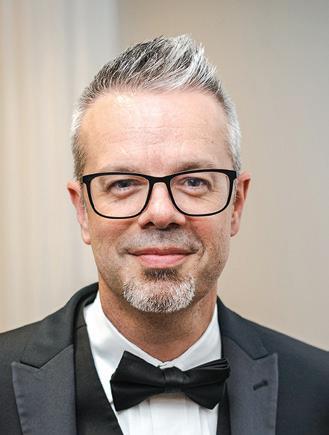
check www.tmea.org for updates
34 Southwestern Musician October 2023
students of all ages by giving us their attention, and most importantly, they provide us with their time.
Time—there will never be enough of it. It is the dedication of one’s time that is key to being an influential mentor, and it can take many forms, including:
• Calling a young teacher on your evening drive home to check on them.
• Spending time following an afternoon sectional with a student teacher, reviewing the triumphs and struggles of the day.
• Picking up coffee for a colleague on the way to school because you know they had a difficult night.
• Sitting down with a frustrated colleague at our convention in February and talking through changes needed to persevere through the remainder of the year.
I wouldn’t be writing this column today had giants before me not taken the time to invest in this northerner as I made my way down to Texas. My first Director of Fine Arts in Garland ISD was the incomparable George W. Jones. A successful band direc-
tor before he arrived at administration, Mr. Jones was on the Josh McGuire “cheer squad” from the moment I met him in his kitchen during the summer of 2005.
While schools and district offices shut down for several weeks in the summer, Mr. Jones was one of those rare gems who wanted to invest in those he planned to hire with his personal time, even if that meant it would be in his own home.
Mr. Jones poured his heart into me over the 14 years I had the privilege of teaching under his leadership, just like he did for every other educator he was charged with serving. His purpose for each of us was different, but with everyone he practiced his mantra that gentle pressure, applied relentlessly, can move mountains.
For some of us, that meant pressing administration for more funding or more assistance. For others, it meant being in our school, keeping an eye on us, and supporting us through his gentle pressure and insistence that we serve kids. For me, it was encouragement to take on bigger roles of leadership, getting in front of people with the same sense of purpose I use with my students in the classroom, and making things better. I didn’t realize until about a
decade later that my boss was molding me to fill a position like his in the future.
Most importantly, Mr. Jones always picked up the phone. He always found time. Thirty seconds could feel like thirty minutes when you spoke with him. I know that so many of my colleagues in this state, in this great profession, give their time to students and colleagues in so many ways. We are a profession of mentorship, and I encourage you to make time to invest, grow, and enrich the future of our profession.
It is not about your great wealth of experience, your triumphs on the stage in a performance, your UIL trophies, or your convention performances. It is all about the time you give to the next transplant who has found their way to Texas or that student teacher who sought out your rehearsal room for the experience that will shape their career. In whom and how will you choose to invest your time?
Thank you, George.
TMEA’s
Mentoring Network
TMEA provides members a mentoring network to link new music educators and those new to Texas with successful music
TEXAS LUTHERAN UNIVERSITY SCHOOL OF MUSIC YOUTH CHOIR FESTIVAL
FOR TREBLE VOICES, GRADES 4–12
Featuring Bob Chilcott 2024 Festival Conductor

Saturday, January 20, 2024
9:00 a.m. – 4:00 p.m. | Jackson Auditorium 4:00 p.m. Free Final Performance
Registration form online at: www.tlu.edu/youth-choir-festival
For more information, contact Laurie Jenschke at ljenschke@tlu.edu or 830.456.3016.
35 Southwestern Musician | October 2023
education professionals. This program of one-on-one mentoring is established for a minimum of one year.
• If you are an experienced TMEA member, I encourage you to enroll to serve as a mentor. You can be the difference-maker in someone’s career!
• If you are new to teaching or to Texas, enroll to be paired with a mentor. Go to www.tmea.org/mentor today.
Clinic/Convention Update
Our incredible annual convention is only four months away! With over 2,000 choir directors from across the state there learning and sharing ideas with each other, there truly is no better place for professional development and inspiration! In addition to many clinics by master educators, you can attend open All-State rehearsals on Thursday and Friday. Learn
from our amazing All-State Conductors as they prepare our four All-State Choirs. To learn more about these conductors go to www.tmea.org/2024conductors (or scan the QR code below).
• Mixed Choir: Michael Barrett, Univ of Pretoria

• Treble Choir: Andrea Ramsey, Composer, Conductor

• Tenor-Bass Choir: Jeffrey Murdock, Univ of Arkansas
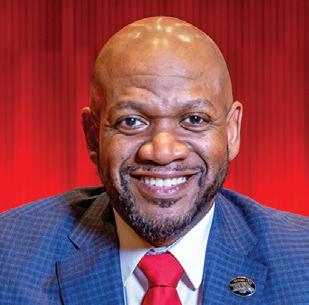

• Small School Mixed Choir: Eduardo Garcia-Novelli, Univ of Kansas
2024 Vocal Division Volunteers
When many members give a little time, they make a big difference! This is especially true for our annual convention. Our Vocal Division alone benefits from hundreds of members who offer some time to
ensure our event is meaningful, efficient, and affordable.
Volunteering doesn’t just help the association run an amazing convention. It results in you making friends with choir directors from across the state! Take a moment now and register to volunteer at www.tmea.org/vocalvolunteer.
Convention Housing
Because of such high demand, hotels in TMEA’s negotiated blocks sell out very quickly. This system opens at 6 a.m. CT on October 5, and earlier that week, TMEA will email members a URL to utilize for optimal reservation website performance (including a waitlist function so you know where you are in the virtual line). For a preview of hotels that will be initially available, go to www.tmea.org/hotelrates. 0
TMEA Clinic/Convention
VOCAL DIVISION
38 Vocal Division Clinics and Honor/Invited Concerts
Vocal Division All-State Conductors
All-State Rehearsals Are Learning Opportunities
Open All-State rehearsals during the convention are amazing opportunities for professional development. Observe nationally recognized conductors prepare an extraordinary concert in three days.
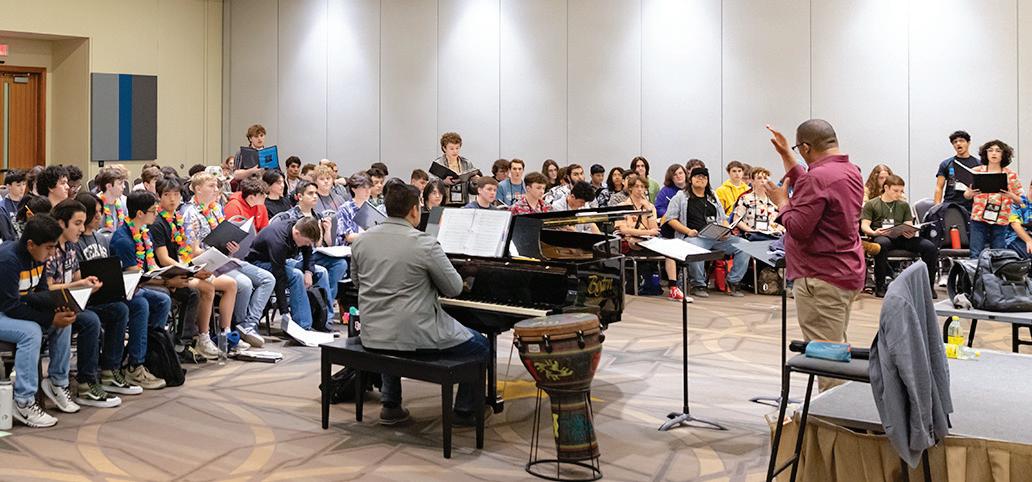
WWW.TMEA.ORG/CONVENTION
Mixed Choir Michael Barrett
Tenor-Bass Choir Jeffrey Murdock
Treble Choir
Andrea Ramsey
Small School Mixed Choir Eduardo Garcia-Novelli Learn More tmea.org/2024conductors
36 Southwestern Musician October 2023
SOUND IDEAS
VOCAL: Achieving Your Desired Choral Tone
 by denise eaton
by denise eaton
Successful teachers have a plan for everything, especially developing choral tone through appropriate choral literature. For any choral director to achieve their performance goal with each ensemble, regardless of age or experience, a fully realized plan must be created. Your plan should focus on the ensemble sound you want to achieve, the repertoire that allows you to develop that choral tone from each ensemble, and score study that will light the path for literature to do its job.
Defining Your Sound
It all starts with sound. As the voice teacher who helps students develop technique every day, you must first define your characteristic chorale tone. It’s the sound in your head you want your choirs to achieve. Our ideal choral sound is often a product of our experiences. It can be influenced by the ensembles in which we’ve sung or through observing our district or Region colleagues’ rehearsals and performances. We also develop our choral tone model through recordings we listen to online, but I don’t mean recordings we randomly stumble upon while streaming YouTube or Spotify. A teacher-conductor committed to building a mature and consistent model of choral tone seeks out juried examples of tone. These recordings are made widely available for their quality, not just for score reference when searching for music online.
Next, create plans to help your choirs achieve that tone. With so many distractions and disruptions, listening in the moment can be challenging. Record your warmups at least once weekly. Detail what you like and don’t like, and plan for improvement. Ask a trusted colleague to listen to your warmups, comment, and make suggestions. Have a clinic specifically on tone so you can listen
All vocal warmups must have a well-defined, intentional purpose and be sequential. My friend and colleague Amy Allibon once commented that choirs often warm up like they brush their teeth without thinking about it. Two well-thought-out vocal exercises in which all are engaged are far preferable to five in which few are engaged. Warmups should engage the students in the task at hand.
Selecting the Right Repertoire
Appropriate repertoire selection is crucial to your ensemble’s learning, growth, and success—to support the growth of developing choirs and to challenge the advanced. It is especially important to seek resources from the best sources. Many composers and publishers have become go-to resources for choral ensembles of all levels of experience and ability. In Texas, even our most seasoned secondary level teachers continue to use the Prescribed Music List, maintained by UIL, when considering literature for their ensembles throughout the year.
For more on this topic, go to www.tmea.org/eaton2023, or scan this code to access the materials:
Before choosing repertoire to achieve your goals, it is essential to know each ensemble’s strengths and weaknesses in these areas:
• Vocal technique, depth of tone needed, vowel production.
• Reading skills.
• Rhythmic skills (an ongoing challenge).
• Aural skills: if they can’t tune intervals on long notes, it’s best not to program rep with fast harmonic rhythm. If they generally need piano support in rehearsal, then choosing an accessible a cappella piece is crucial.
• Language adaptability/foreign language: don’t over-program in foreign languages if this is an area requiring more development to build confidence.
Studying the Score
Simply put, if you don’t know the score, you can’t teach the score. Regardless of ensemble level, the directors must be able to:
• Sing and play every part.
• Define all patterns (melodic and rhythmic) within each part and between each part.
• Utilize best practices for introducing musical concepts away from the musical score:
▶ Sightreading in the meter and key of the music
▶ Rhythm breakdown before seeing actual patterns
▶ Harmonic progressions extracted from the music
Incorporating these basic foundational items into your preparation allows the director to continue to add to their toolbox moving forward in this great profession. Most importantly, it sets up the choral ensemble with a foundation to make great music.
Your fully realized plan is the key to achieving your goals, realizing the ability of the ensemble, and creating an experience for the listener that raises their awareness of how a quality chorale ensemble should sound. 0
Denise Eaton is a longtime music educator, author, clinician, and choral consultant and is a TMEA Past-President and past Vocal Vice-President.
37 Southwestern Musician | October 2023
Congratulations to the 2023 MARK OF EXCELLENCE COMMENDED WINNERS!
WIND BAND
CLASS A
Bohls MS Wind Ensemble Lisa Hernandez Pflugerville, TX
Deerpark MS Wind Symphony Nicole Correa-Kemp Austin, TX
Harpool MS Symphonic Band Bryan Stone Lantana, TX
Heritage MS Honors Band Josh Smith Colleyville, TX
Hudson Bend MS Honors Band.........................Analisa Walker Austin, TX
Los Cuates MS Honor Band Criselda Marroquin Morrell Los Fresnos, TX
North Belton MS Wind Ensemble......................Dane Wurman Temple, TX
North Ridge MS Honors Band Jessica Shadman North Richland Hills, TX
School for the Creative and Performing Arts MS Band Robin A Barker Lexington, KY
Timberview MS Wind Ensemble........................Timothy (TJ) Emsley Fort Worth, TX
West Ridge MS Wind Ensemble Alanna Tate Kumme Austin, TX
CLASS AA
Argyle MS Honor Winds Bojan Gutic Argyle, TX
Blalack MS Honors Band Keith Marshall Carrollton, TX
Bondy Wind Ensemble Russell Bowlin Pasadena, TX
Cinco Ranch JH Honors Band Rachelle Isaacson Katy, TX
Cooper JH Wind Ensemble Adam Powell & Misty Smith Wylie, TX
Dieterich MS Honor Band Andrea Tenant Midlothian, TX
Dowell MS Wind Ensemble Tiffany Lisko McKinney, TX
Hornedo MS Honor Band Ruth Allen El Paso, TX
Indian Springs MS Wind Ensemble...................Sarah Chance Keller, TX
Irons JH Wind Ensemble Michael Dick Conroe, TX
Keefer Crossing MS Wind Ensemble...........Monica Hester, Isaac Martinez, & Matthew Anderson New Caney, TX
Nimitz MS Honors Band Richard Wall Boerne, TX
North Shore MS Wind Ensemble Danny Rubio Houston, TX
Pearland JH West Honors Band Meredith Bishop Pearland, TX
Pearson MS Symphonic Band............................Michelle Black Frisco, TX
Pearson Ranch MS Wind Ensemble Anne Leo & David Eickbusch Austin, TX
Rogers MS Symphonic Winds
Joshua Ferman Prosper, TX
Sartartia MS Wind Ensemble Julieanne Amos Sugar Land, TX
Seabrook Intermediate Wind Ensemble Austin Tran Seabrook, TX
Smith MS Symphonic Winds Stephen Van Hooser Cypress, TX
Spillane MS Symphonic Winds John Barton Cypress, TX
Tidwell MS Wind Ensemble
Renee Quinlan Fort Worth, TX
Ulrich Wind Ensemble Mike Rogers Klein, TX
Wester MS Wind Ensemble Brad Smith Frisco, TX
CLASS AAAA
Burnet HS Wind Ensemble Joseph Cox Burnet, TX
Sunnyvale HS Symphonic Band Jacob Pipak Sunnyvale, TX
Westwood HS Panther Band Shayla Skief Palestine, TX
CLASS AAAAA
Arlington Heights HS Wind Ensemble Brad Pritchett Fort Worth, TX
Colleyville Heritage HS Wind Ensemble Gary R Barnard Colleyville, TX
Grapevine HS Wind Ensemble James Rees Grapevine, TX
Lebanon Trail HS Wind Ensemble......................Kelly Wykoff Frisco, TX
Magnolia West HS Wind Ensemble Andrew Hicks Magnolia, TX
Rio Grande City HS Symphonic Winds Eric Garza Rio Grande City, TX
Robert E. Hendrickson HS Wind Ensemble James Hairston Plfugerville, TX
Samuel V. Champion HS Wind Ensemble Jason Younts Boerne, TX
The Colony HS Wind Symphony Michael Larkin The Colony, TX
CLASS AAAAAA
Bridgeland HS Wind Symphony Shawn McAnear Cypress, TX
Cedar Ridge HS Wind Ensemble Daniel Musaccio Round Rock, TX
J.J. Pearce HS Wind Ensemble Dimitrios Icossipentarhos Richardson, TX
Lake Ridge HS Wind Symphony Brad Bonebrake Mansfield, TX
Lakeview Centennial HS Wind Ensemble Jared Hudler Garland, TX
McKinney HS Wind Symphony Brandon Fisher McKinney, TX
New Braunfels HS Wind Ensemble David C. Eckert New Braunfels, TX
Plano East Senior High Wind Ensemble John Brennan Plano, TX
Richardson HS Wind Symphony Christopher Bronson Richardson, TX
South Grand Prairie HS Wind Ensemble Michelle Ross....................................... Grand Prairie, TX
NEW MUSIC DIVISION
Clear Lake HS Wind Ensemble John Pearce Houston, TX
Jack C. Hays HS Wind Ensemble John Rauschuber Buda, TX
Lake Ridge HS Wind Symphony Brad Bonebrake Mansfield, TX
Lakeview Centennial HS Wind Ensemble Jared Hudler Garland, TX
Lockport Township HS Wind Symphony Brian Covey Lockport, IL
McKinney HS Wind Symphony Brandon Fisher McKinney, TX
Farley MS Wind Ensemble.................................Kyle Ruschhaupt Georgetown, TX
Macario Garcia MS Honors Band Sarah Saldana Sugar Land, TX
Red Oak MS Honors Band Megan Czerwieski Red Oak, TX
Sartartia MS Wind Ensemble Julieanne Amos Sugar Land, TX
Special thanks to adjudicators Steve Peterson, Nicholas Enrico Williams, Gary Green, Gary Hill, and Tim Rhea.
ORCHESTRA
MIDDLE SCHOOL STRING ORCHESTRA
Central JH Chamber Orchestra Tara Truex Euless, TX
Doerre Intermediate Chamber Orchestra Rowina Torres McKee Klein, TX
Dowell MS Honors Orchestra.............................Michael Graber McKinney, TX
Krimmel Intermediate Chamber Orchestra Tiffany Webb, Stephen Cook Klein, TX
Maus MS Advanced Symphony Orchestra Jamie Romo Ardmore, TX
Meyerland PVA MS Sinfonia Orchestra Timothy Maynard........................................ Houston, TX
Pearson Ranch MS Honors Orchestra Colleen Whatley Austin, TX
Sierra Vista MS Chamber Orchestra Henry Miller Irvine, CA
Tays JH Chamber Orchestra Bryanna Porter Katy, TX
WoodCreek JH Chamber Orchestra Klayton Hoefler Katy, TX
MIDDLE SCHOOL FULL ORCHESTRA
Schimelpfenig MS Full Orchestra..........Ben Altom, Jennifer Guffey, Michael Scott, Christine Aeschbacher.........Plano, TX
Ulrich Symphony Orchestra Marcelle Martin....................................................................Klein, TX
HIGH SCHOOL STRING ORCHESTRA
Clear Creek HS Chamber Orchestra Brandon Cornett League City, TX
Richardson HS Chamber Orchestra Sara A. Long Richardson, TX
Congratulations to the 2023 MARK OF EXCELLENCE COMMENDED WINNERS!
Ronald Reagan HS Chamber Orchestra Sixto Elizondo San Antonio, TX
Stratford HS Symphony Orchestra Artan Zhuri Houston, TX
Tomball Memorial HS Chamber Orchestra Peter C. Jagdeo Tomball, TX
Wakeland HS Chamber Orchestra Ludmilla B. Duston Frisco, TX
HIGH SCHOOL FULL ORCHESTRA
Byron Nelson HS Symphony Orchestra Gary Keller & Michael Moore Trophy Club, TX
Jordan HS Symphony Kyle Davis & Daniel Galloway.....................Fulshear, TX
L.D. Bell HS Full Symphony Orchestra............Allison King, Suzanne Dell, & Christopher Harmon Hurst, TX
Special thanks to adjudicators Anthony Maiello and Jeff Grogan.
CHOIR
MIDDLE SCHOOL TREBLE CHOIR
Acton MS Varsity Treble Choir Randall Walters Granbury, TX
Arnold MS Bella Voce Marie Parisot Olsen Cypress, TX
Goodson MS Varsity Treble Choir Rebecca Vaughn Cypress, TX
Hudson Bend MS Varsity Treble.........................Brian DeCou Austin, TX
Indian Springs MS Honor Treble Choir Lauren Garcia Keller, TX
Middle School Open Class
Cook MS Non-Varsity Treble Choir........................................Katie Arnoldy Houston, TX
Grand Prairie Fine Arts Academy MS Tenor-Bass Singers............Joel Duarte Grand Prairie, TX
High School Mixed Choir
Grand Oaks HS Varsity Mixed Choir J.R. Smith Spring, TX
Jersey Village HS Varsity Mixed Choir Gregory Moore Houston, TX
Klein Cain HS Chorale Austin Dean Houston, TX
Prosper HS A Cappella Choir..............................Crystal Chamberlain Prosper, TX The Woodlands HS Chamber Choir Patrick Newcomb The Woodlands, TX
High School Open Class
Angleton HS Cantus Firmus...............................Tony Stewart Angleton, TX
Elkins HS Varsity Treble Choir John Richardson Missouri City, TX
Granbury HS Varsity Tenor-Bass Choir Kendra Fisher Granbury, TX
Grand Oaks HS Varsity Treble Choir J.R. Smith Spring, TX
Grand Prairie Fine Arts Academy Treble Singers Joel Duarte Grand Prairie, TX
Wylie East HS Varsity Tenor-Bass Choir Nathan Dame Wylie, TX
Special thanks to adjudicator Richard Bjella.
HIGH SCHOOL JAZZ ENSEMBLE
Barbers Hill HS Soaring Eagle Jazz Band Dwight Watson...................................Mont Belvieu, TX
Denton HS Lab Band 1 Jesse Woolery Denton, TX
Magnolia HS Jazz Ensemble Anthony Jackson Magnolia, TX
New Braunfels HS Jazz Ensemble David Eckert New Braunfels, TX
Special thanks to adjudicator Jeff Jarvis.
PERCUSSION
HIGH SCHOOL PERCUSSION ENSEMBLE
Dickinson HS Percussion Ensemble Todd Sommer Dickinson, TX
MIDDLE SCHOOL PERCUSSION ENSEMBLE
Kerr MS Percussion Ensemble Andrew Klein Burleson, TX
Special Thanks to adjudicator Brian West.
MIDDLE SCHOOL JAZZ ENSEMBLE
Grand Prairie Fine Arts Academy MS Jazz 1 Mark De Hertogh Grand Prairie, TX
Vela Jazz I Erika R. Uribe Harlingen, TX
The 2023 Mark of Excellence had 442 entries and has received entries from 40 different states. More information is available at www.foundationformusiceducation.org/Mark-of-Excellence Rick Yancey, managing director: rick@foundationformusiceducation.org
Thanks to the entrants of the Mark of Excellence, The Foundation for Music Education is able to help fund clinics at TODA,TBA, TCDA, and The Texas Music Educators Association, help provide scholarships and several other resources for the advancement of music education in the United States.
RECORDINGS NOW AVAILABLE!
JAZZ
These performances are now a permanent xture in the most comprehensive and prestigious library of its type, and are accessible from anywhere in the world in just a few minutes. View and access the Mark website and catalog at www.markcustom.com More information is available at www.foundationformusiceducation.org/Mark-of-Excellence Compilation recordings of the Mark of Excellence National Winners are offered as an MP3 download through MarkCustom.com HONORS
Integrating Technology into the Secondary Music Classroom
By Daniel Bryson
Integrating technology in our daily lives has been embraced by our society. More companies offer remote work and much of our data is stored in the Cloud. With strides in virtual reality and AI, a whole new way of experiencing and navigating life is emerging. Yet with all of today’s technological advances, why are a tuner, a metronome, and perhaps a digital piano the most technologically advanced pieces of equipment utilized in many music classrooms?
As a performing art, I get it—the act of singing and playing is paramount and should remain the most important thing we do. However, there are ways we can prioritize performance while also bringing our classrooms into the 21st century. In this article, I hope to offer some ways to implement technology that engages students and satisfies required state TEKS.
My Background
As part of Frisco ISD, our middle school utilizes an eight-period modified block schedule. Mondays, Tuesdays, and Fridays are eight-period days and students attend every class. On Wednesdays and Thursdays, we teach half our classes for 90 minutes each. During these longer classes, we gain the opportunity to dive deeper into content; however, this also presents a challenge for middle school musicians, especially beginners.
As we’re taught in pedagogy classes, it is neither natural nor healthy for a singer or instrumentalist to practice more than 20–30 minutes in a single session. For the most part, we stay true to this when announcements and brief sectional work are integrated into a normal 42-minute class. However, singing or playing straight through 90-minute class periods pushes students well beyond that 30-minute mark. With this schedule, I found it necessary to explore ways of musically enriching students in addition to traditional rehearsal practices.
Keeping Students Engaged and Learning
Incorporating other learning opportunities is crucial for keeping students engaged during these extended class periods. Frisco ISD is a 1:1 district; each student is given a Chromebook on which
to complete their assignments, and teachers are encouraged to integrate technology into lessons. In response, utilizing the district’s nine-week grading periods, I broke the year into four units, giving each a different overall TEKS-based goal. The four main units cover music theory, genre-specific singing styles, ear training, and solo performance, followed by a bonus, weeklong composing/arranging project after STAAR testing.
Students became more engaged and excited about choir, and even though some class time was diverted to these projects each week, there was no degradation in the level at which students performed. Students not only worked toward mastery on TEKS often not emphasized in traditional rehearsal, but they also continued to work on their concert music at a level consistent with earning top ratings at their UIL Concert and Sightreading Evaluation.
While the units I describe are based on choral instruction, the structure and technologies utilized can be applied to any ensemble.
Units & Projects
In addition to the music we practice for quarterly performances, students complete four units and one project every year. The first of these units consists entirely of music theory concepts and takes place in the first grading period.
Unit 1: Music Theory
While this may initially seem like I am simply doing the due diligence of teaching my students music literacy skills, I actually teach music theory concepts in a strategic manner. The lessons compound weekly, ensuring new concepts are tested and earlier concepts are retained. Music theory concepts and keywords taught at the beginning of the year include:
• Staff Construction: Staff, line, space, treble clef, bass clef, grand staff, time signature, key signature, ledger line, barline, measure, double barline, open repeat, closed repeat.
• Rhythmic Values: Note, rest, whole, half, quarter, eighth, sixteenth, tempo, beat, notehead, stem, flag, beam.
40 Southwestern Musician October 2023
• Staff Notation: Musical alphabet, EGBDF, FACE, GBDFA, ACEG, middle C.
• Dynamics: pp, p, mp, mf, f, ff
In the first six weeks of this unit, students are taught several concepts per week. Additionally, students have a weekly quiz over new and previously learned concepts. In week seven, students are given a review on each overarching category listed above. Students take a fifty-question summative test in week eight, and week nine allows for remediation and retesting as needed. Once complete, most students retain music theory concepts from this unit throughout the year with 90% accuracy or above.
You may wonder why I’ve outlined this unit when this article is about technology integration. Simple. Like the three that follow, this unit is entirely digital through the utilization of Canvas, a Learning Management System (LMS). Canvas allows for easily created question banks, quizzes, assignments, and tests, all of which deliver content to the students efficiently and effectively. This digital unit could be easily replicated and integrated into Google Classroom using Google Docs and Google Forms. In addition to the LMS, online resources from MusicTheory.net and MusicTechTeacher.com help reinforce concepts the students learn each week.
Unit 2: Singing Styles Project
As choral musicians, we are mostly taught to sing classically, primarily because the classical style builds technique that can be applied to other singing styles. Though my focus is primarily on classical training, I am also responsible for teaching other styles. To help students begin exploring singing styles, we spend eight weeks diving into four of the most common styles present in western music: classical, pop, jazz, and musical theatre.
Students examine each style for two weeks. In the first week, they watch videos about how to sing or perform in each style. In the second, they examine different performances in that style, good and bad. Lastly, in week nine, students combine the knowledge they have gained for each singing style to answer a series of questions requiring them to compare and contrast each style. This helps solidify their understanding of when to use, or not use, certain techniques.
This project almost exclusively uses Google Slides with linked YouTube videos,
making it easily integrable into Canvas or Google Classroom. Additionally, while this project is mainly geared toward choral singers, it could be adapted for use with instrumental musicians.
Unit 3: Rinn Ear Training Squares
At the beginning of the spring semester, we begin to buckle down and prepare for UIL. It was crucial that our breaks from singing during class were used in a manner that still contributed to the overall goal of a superior-worthy performance at UIL.




In my first year of teaching, I was intro-
duced to the Rinn Ear Training Squares, developed by Thomas Rinn, a longtime choral educator and current Assistant Professor of Choral Music Education at Texas State University. The sequentially built squares are used to test a student’s ability to match aural pitches with their corresponding solfège syllables. Through this process, students can see and hear the direction in which pitches move.
During my first couple of years using the ear training squares, I had students complete them by hand, selecting the solfège syllable that corresponded with each pitch
School of Music
Fall 2023 Spring 2024 AUDITIONS
November 18th, 2023
Voice and All Instruments excluding guitar
January 27th, 2024
Voice and All Instruments excluding percussion and guitar
February 3rd, 2024
Voice and All Instruments excluding percussion and guitar
February 24th, 2024
Voice and All Instruments
March 2nd, 2024
Voice and All Instruments excluding guitar
April 13th, 2024
Voice and Percussion non-scholarship
Scan for more information. shsu.edu/music 936.294.1360

41 Southwestern Musician | October 2023
AT SAM HOUSTON STATE UNIVERSITY
Go

www.tmea.org/bryson2023
I played. Later, I chose to digitally adapt this assignment so students could annotate on a PDF using Kami. By integrating Kami into Canvas, each student could open, edit, and submit their squares without ever leaving the webpage. This greatly reduces the time required to grade each assignment, and it gives students the ability to explore a new application.
Unit 4: Music Video Project
After UIL evaluation, this fourth project helps encourage students to keep pushing to the end of the year. It is undoubtedly my students’ favorite because of the creative freedom involved. The simplest explanation of this project is that in seven weeks students go through the entire process of creating a music video from scratch. The Music Video Project gives students the opportunity to learn to use multiple software applications while challenging them
to dive into the creative process of making a vision in their head come to life. Below is the timeline students utilize for this project:
• Week 1: Idea Submission Due: Students know the who, what, why, and karaoke track of their song.
• Week 3: Audio Submission Due: Students record themselves singing a cover of their song choice.
• Week 4: Script Submission Due: Students type out the lyrics and corresponding scenes, actions, props.
• Week 6: Video Submission Due: Students video-record their scenes for the music video.
• Week 7: Final Submission Due: Students edit audio and video together to create their final music video.
Through this project, students get to uti-
lize various software applications such as WeVideo, iMovie, GarageBand, Audacity, CapCut, Apple Music, and YouTube. The project also reinforces information each student learned during the pop style portion of the Singing Styles Project.
Bonus Unit: Composition Project
The final project occurs after the conclusion of STAAR testing. Students enjoy the Composition Project because it is a relaxed way to end the school year while still learning and being creative. This project is implemented through a combination of Canvas (for instruction) and Noteflight, a web-based music composition software. Phase One requires the students to learn the Noteflight software through the recreation of a nursery rhyme given to them on Canvas in PDF. In their recreations of the nursery rhyme, they must perfectly input notes, rhythms, and text placement.
In Phase Two, students begin to have more musical freedom. In this phase, they must add a minimum of two new instruments, neither of which can have the same melody or rhythm as the musical line from Phase One. Additionally, they must add at least three dynamics, three musical notations, and two additional stanzas of lyrics. Other than that, students have complete freedom to create. They must articulate why they made the musical choices they did. Ultimately, the test of whether it sounds good is up to them.
Teaching Creative Freedom
The music classroom doesn’t have to be a place where students only sing or play their instrument. Effective teaching can still be accomplished while changing the pace to increase student engagement. Students love opportunities to try new things and take risks in structured ways. Incorporating new technology and learning opportunities into the classroom is an excellent way of giving students the freedom to explore their musical creativity.
Daniel Bryson is the former Choir Director at Lawler MS in Frisco ISD. Still at Lawler MS, he now teaches Digital Graphics and Animation and Academy Connect while also serving as the Associate Director of Music at White’s Chapel Methodist Church in Southlake.

42 Southwestern Musician October 2023
to
or scan this code to download instructions, files, and assignment documents that support each unit described in this article.
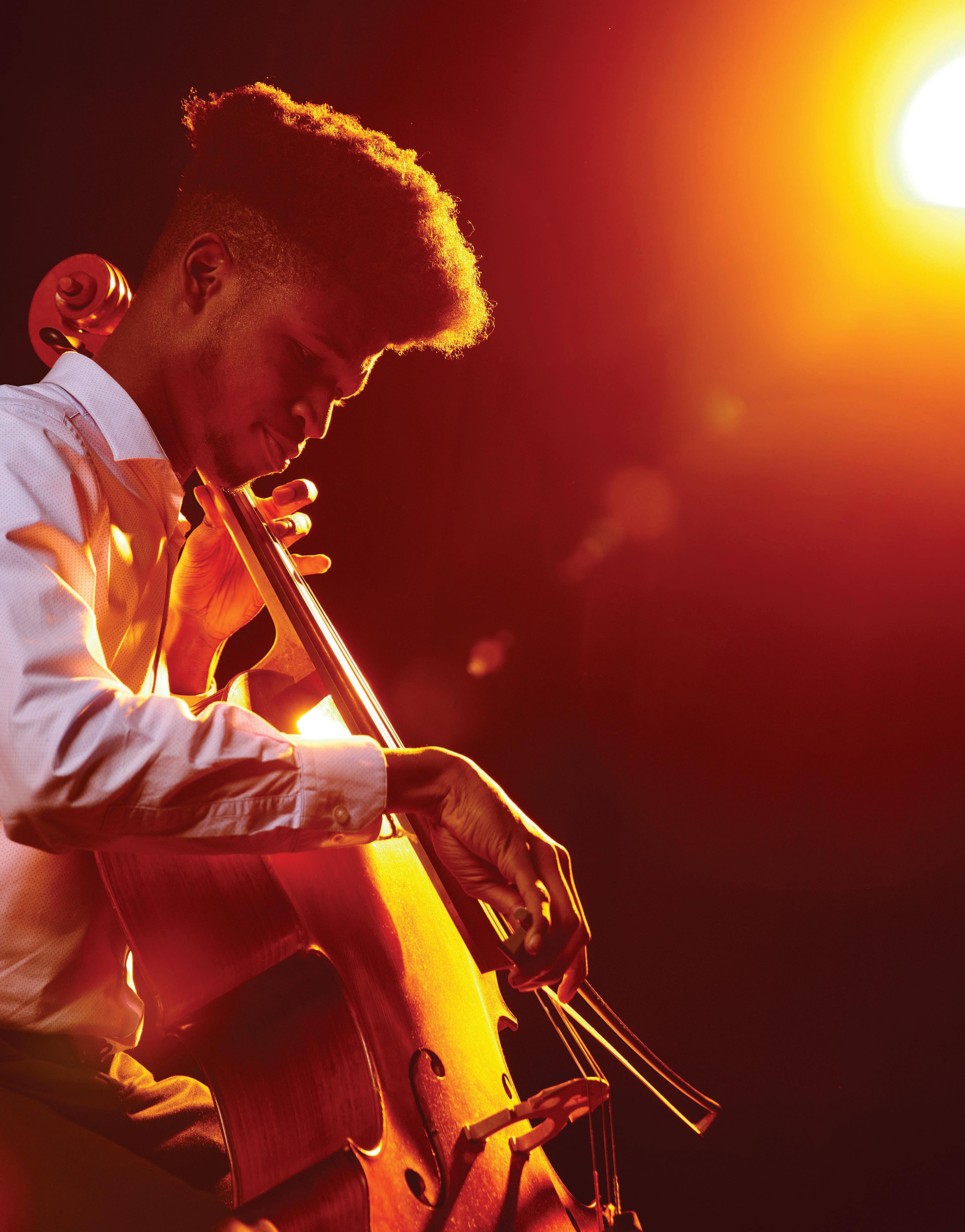
Explore 50+ undergraduate and graduate music program offerings at bostonconservatory.berklee.edu/music. Amplify your artistry. INTERESTED IN SUMMER TRAINING? Register online for one of our summer programs in brass, composition, voice, or vocal pedagogy.

Joyful Music Literacy for the Upper Elementary Classroom
By Sarah Tullock
When a new apprentice teacher arrives in my classroom, they receive a crash course in Kodály inspired pedagogy. I usually start off by letting them know that while they might prefer another pedagogical base in their future practice, I prefer they engage in this process with my students and me. Invariably, after the second or third independently taught lesson plan with third, fourth, or fifth graders, the new teacher will say something akin to “I can’t believe they just read that! And they thought we were playing a game!”
Of course, they’re not always talking about the same rhythmic or melodic context when they say this, but the magic is the same. And even though I’ve been teaching general music through the Kodály lens for over a decade, I’ll gladly admit I’m still excited when students experience the joy of play during their music literacy activities. So, how do we get there? How do we establish norms that lead to a sense of play in our music literacy?
In this article, I will share some simple habits of mind and activities aimed at building joyful music literacy engagement for third through fifth graders. You might already be engaging in some, while others may be new to you. Either way, I hope you find affirmation and energy here to feed the important work you do with your students.

Discovery as Habit
Establishing exploratory and experiential learning as the basis for all music literacy activities from the start will create an atmo-
sphere of excitement and curiosity. Our students take their cues from us in many ways. If we show them enthusiasm, curiosity, and a healthy sense of playfulness through our music literacy sequence, they will learn to carry those attitudes into their musical lives for years to come.
Objectives/Learning Targets that Preserve Discovery Learning: I teach in the state of Tennessee, and many of our school systems currently require teachers to post standards-based “I can” statements for each lesson (example: I can read and sing pentatonic songs). Because music literacy progresses most naturally through experiential/discovery learning, my colleagues and I weren’t overjoyed about the prospect of giving away “the answer” before asking the question. We didn’t want students to see “I can sing, read, and play mi re do” posted during the preparatory stage of concept development. We wanted to preserve the element of surprise and the empowerment that the discovery process brings to the learner. So, what’s a teacher to do? When posting objectives, name the process instead of naming the element.
Allow students to describe elements through active musicmaking during the lesson (discovery learning at its finest). Use learning targets, essential questions, or objectives to clarify processes while leaving students to the work of clarifying concepts. Example: “I can sing, explore, and describe the new mystery melody sound.” It’s good to explain this rationale to administrators in terms of learning theories they might already have in their background. When my administrators don’t have a background in music, I often bring Piaget into the discussion. Children as
45 Southwestern Musician | October 2023
Take communication to the next level by being the origin of all useful mischief.
explorers! Piaget offers a wonderful pairing with most of our major learning theories in music (Orff, Kodály, and Gordon all come to mind).
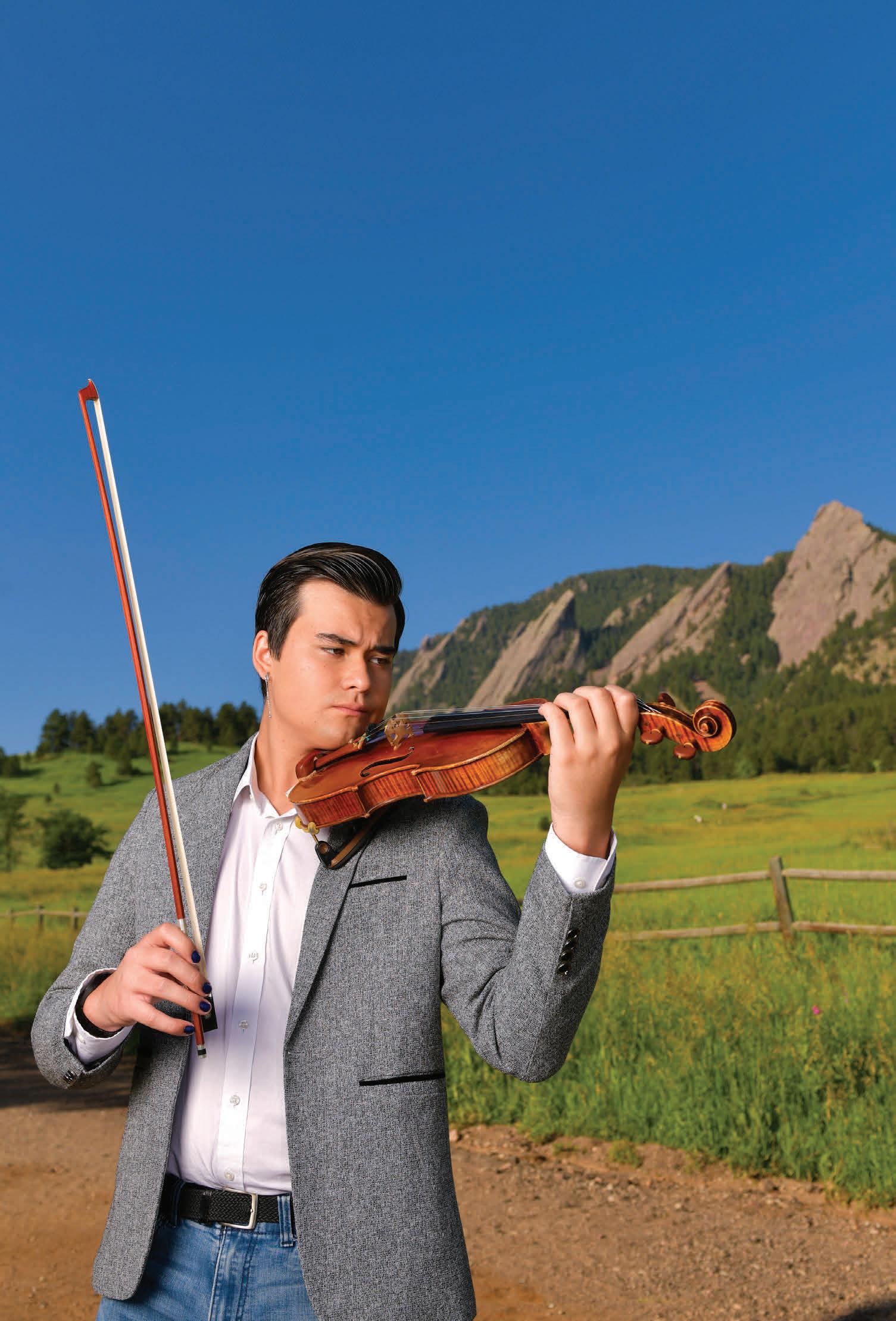
Clever Questioning/Putting on a Character to Communicate with Students: Take communication to the next level by being the origin of all useful mischief. I ask questions and give instructions for activities in creative, silly ways. I put on a sort of character for my students that helps to establish the sense of play I want them to carry through the lesson.
When I coach apprentice teachers, I tell them they’ve got to find their unique humor with which to lead. My favorite archetypes for this are Ms. Frizzle and Mary Poppins. They’re both no-nonsense characters who obviously carry humor into what they do. Students appreciate this more than we tend to realize. I try to give myself a bit of time in the morning to get into character so that when I walk in the door of the school, my students see the character I’m channeling.
The Board Is Not Boring: Turn It into a Toy
Bringing joy and playfulness to board work or notation work we might do as part of our students’ music literacy experience will guide us toward student engagement and away from boredom and disengagement. Below you’ll find two ways to turn standard notation into a big game or puzzle (on whatever board or screen you have). Keep in mind, if you’re not having fun, they won’t be either. Put energy into playing along with students so that they will play along with you! If you don’t enjoy a particular game, find a new one. Offer them only what you can get behind—it makes a difference.
Mystery Song of the Day: Start with a known melody on the board, but don’t tell students the name of the tune. The reading itself can be game-like, especially if you narrate the experience like a game show host. A big part of scaffolding can be recalling the names of known rhythmic elements and known solfège, in context. As we ask students to remind themselves of the names of known elements and their sound relationships, we can express positive feedback and infuse the recall process with excitement.
By the time students have sung the melody aloud, they will be close to figuring out its name. When students offer guesses, try them. Let students see how their guesses fit or don’t. This can be great fun when you have more than one song based on the same or very similar tune, like “Toodala” and “Chase the Squirrel.” Students might guess one while reading the other. Finding subtle differences is a delight!
Facial Feature Dash: Start with two empty circles and a steady beat grid on the board. Point to the grid while singing a song or speaking a rhyme. Students raise their hands to suggest rhythms or solfège to go into each beat space to fill in the music (you can play either way). The teacher awards the class a facial feature in their empty circle for each correct answer. For each incorrect guess, the teacher gets to add a feature to the teacher’s own empty circle. The sillier, the better.
Bonus Advice: Don’t commit yourself to the idea that all sightreading/ notation work must be an entire piece of music. A single phrase of any given song might be enough to accomplish your goal. Sometimes I extract a single phrase from a focus song. We work meaningfully
46 Southwestern Musician October 2023
At the University of Colorado Boulder College of Music, we develop multiskilled, multifaceted universal musicians equipped to participate in the 21st century as artists; as broadly-based professionals with flexible career options; and as compassionate world citizens. Discover more at colorado.edu/music
with that phrase as sightreaders, and then we move on! Good pacing and balanced energy matters when we want our students to find activities meaningful.
Mid-Game Literacy Moments
Let’s take a moment to unpack how to naturally weave music literacy touchstones into singing games so that students connect the dots as they play.
Encoding Patterns: Encoding is a word you’ve likely heard in a literacy context. When students encode, they hear a sound and write, show, or otherwise express its corresponding symbol (or name). I love pausing between rounds of a good singing game for an encoding moment. After playing a round of “Let Us Chase the Squirrel,” I might ask students to encode the phrase “Up the hickory, down the hickory” by showing me the solfège in hand signs as we sing that phrase. If 90% of the class displays the correct solfège, we play a bonus round of the game.
Decoding Patterns: In this reverse of encoding, students see musical symbols and produce the corresponding sounds. Because this is the very definition of sightreading, many teachers feel burdened to isolate it. “Okay, everybody. Time to sit down. We are going to read.” My students’ reading doesn’t all occur at the board. I carefully choose their song material so every piece of music points toward the element we’re exploring (preparing) or practicing (conscious knowledge).
Because all the material in the lesson plan supports my main goals, I can easily drop reading opportunities into game play without stopping the action. Between rounds, I might show students a single phrase or just a phrase beginning or ending and ask them to figure out where in the game it happens. When appropriate scaffolding is used, this kind of activity flows seamlessly and students don’t realize they’ve just done a legitimate reading activity between the rounds of a game.
Musical Transitions
We can take cues from our repertoire during the planning process so that one musical experience becomes the spring-
board for the next. This creates a seamless and natural learning atmosphere for our students, which promotes deeply meaningful skill acquisition.
Melodic Connections: Using the tone ladder or simply singing from hand signs can be helpful with these transitions. The beginning of “Tideo” shares solfège with the beginning of “Great Big House in New Orleans.” Inviting our students to read one and then aurally find its match in their memory is a wonderful transition and an effective exercise in comparison.
Rhythmic Connections: The last two measures of “Alabama Gal” and “Cut the Cake” are rhythmically identical. Late in fourth grade or early in fifth, I’m usually working on the fourth scale degree ( fa) and syncopation. “Alabama Gal” might be on the board in stick notation for syncopation reading practice. When we’re done with it, I erase all but the last two measures. Below the stick rhythms, I might place sol fa mi re do and ask students to sight sing it. “What song do we know that ends this way?” Invariably, they shout, “Cut the Cake!” and we get out a parachute to play a delightful big-kid variation on the game. Rhythmic connections between songs in a single lesson plan are magical.
Retrograde Connections: “Frosty Weather” begins with a lovely sol mi re do figure. “Let Us Chase the Squirrel” begins with a wonderful do do re re mi sol line. If my students have just finished reading a bit of one or the other, I might invite them to sing the opening phrase slowly on solfège—backward! “Hmm. What tune does that remind you of?” And off we go!
Finding the Fun in What Needs to Get Done

Approaching music literacy activities with a healthy sense of mischief during our planning will pave the way for student enjoyment during the learning process. I work things out ahead of time so that my students experience any given lesson plan as a single musical experience rather than a string of activities.
Although we’re up and down, reading, hearing, dancing, and playing, I don’t want them to think of what’s happening in
those terms. I want them to feel that they blinked and somehow class has come and gone—too joyful to check the clock. 0
Sarah Tullock is a 2024 TMEA Elementary Division Featured Clinician. Tullock teaches PreK–5 general music at Snow Hill
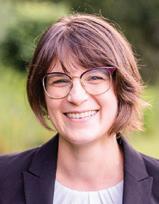
Elementary in Hamilton County, Tenn., as well as choral conducting at the UTC Kodály Institute, and Level III pedagogy, materials, and choral conducting for the Carolina Kodály Institute.
Go to www.tmea.org/tullock2023, or scan this code to access additional materials to help you deliver joyful muslc literacy instruction.
47 Southwestern Musician | October 2023








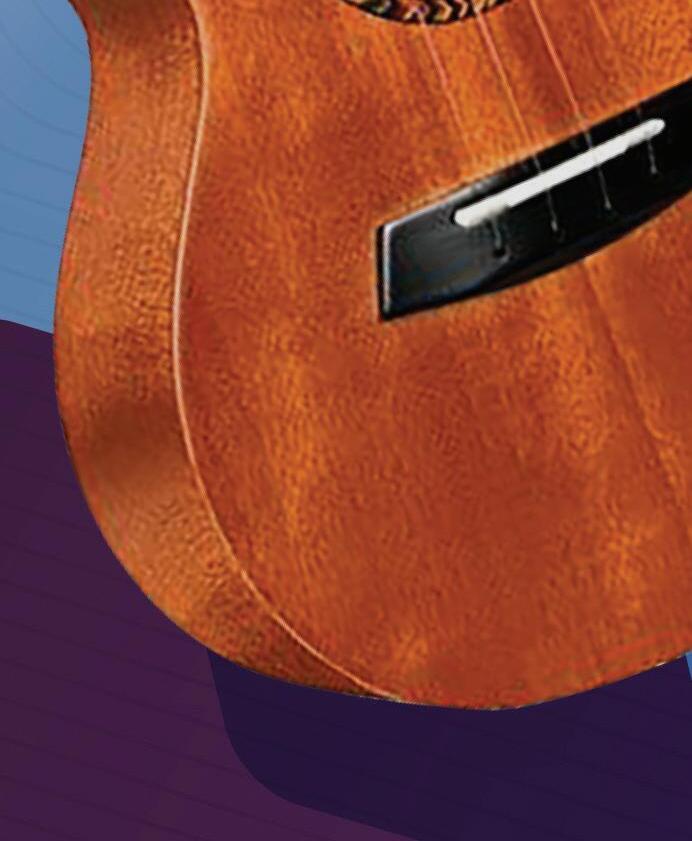

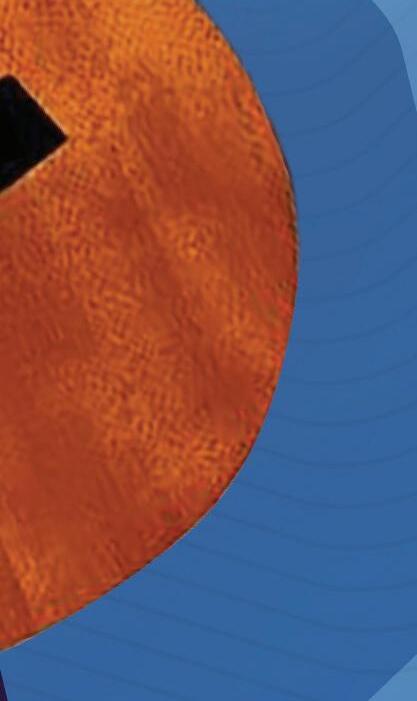















Contact us about teacher pricing and discounts on classroom sets. BY ENYA lassic eripole® UKULELE 800.443.3592 PERIPOLE.COM A New Classic From PARTNERS IN MUSIC EDUCATION UKULELE FEATURES: • Great Action, Intonation, and Tuning Retention! • No Sharp frets at sides of neck • Closed geared tuners to keep out dust • Factory installed strap buttons on all instruments • Beautiful sound! • Includes Enrichment Kit! • Mahogany wood ENRICHMENT KIT FREE WITH EACH INSTRUMENT: • Padded gig bag with zipper pocket to hold accessories • Strap • Vibrational digital-chromatic tuner • Capo • Extra set of strings • Polishing cloth • Finger shaker for strumming hand Great Quality · Great Price · Complete Kit
ELEMENTARY: Classroom Management
by judy hudson
Creating a safe learning environment for our students is critical and it requires constant adjustment and reflection. As our students change, so must our approach to managing behavior. I have found that effective classroom management boils down to three things: expectations, consistency, and relationships.
Establishing Rules and Procedures
Establishing clear expectations with your students at the start of the school year requires some advanced thought and planning. Create rules for your classroom that reflect your expectations, align with the campus behavior plan, and address potential student problems. I use the following rules in my classroom:
• Make music and have fun.
• Use kind words and actions.
• Show respect to others.
• Treat instruments with care.
• Control your hands, feet, and objects.
It is important to discuss your classroom rules and practice them as a class. There are many ways to do this, but a fun way is to act out or have students act out what it looks like to follow or not follow the rules. This takes time up front, but I find it results in long-term time savings by reducing behavior interruptions throughout the year. At the start of every class, I quickly review classroom expectations and go into more depth over specific rules as needed.
Classroom procedures also require practice. Create a list of procedures for students to know and practice (e.g., lining up, finding a partner, forming groups, getting instruments out, putting instruments away). Consistently modeling procedures and praising students who are doing well are effective ways to ensure their success.
Student Relationships
Positive student relationships have an immeasurable impact on student behavior. There are many activities that can help you build relationships with your students. A few I use at the start of the year that help build those relationships are Passing Game/Welcome Song (K–2), Jump in/Jump Out (3–5), Teacher Information Sharing. For details on each, go to www.tmea.org/ relationship-activities.
Reward System
Establishing a reward system can also help with classroom management. The system I have used the most and with great success has been a star reward system. Each class gets an opportunity to earn a star during the music period by earning the letters “M–U–S–I–C” on the board. I will periodically give them a chance to earn letters, especially during transitions, and I reserve the “C” for the end of class if they quietly line up. At the end of the grading period, the classes with five or more stars get a Five-Star Reward Day during which they can vote on a variety of music games and play them as a class.
Special Education Considerations

Special populations can sometimes provide additional challenges, but they can also provide valuable learning opportunities for our classes. Along with fully understanding their needs, building relationships with these students is especially important. It is essential to meet with unit instructors, case managers, or special education coordinators at the start of the year to review each student’s information, including possible modifications and accommodations. Our goal should always be full inclusion of all students, so review with paraprofessionals what that will mean for each student and determine how they can assist in your music room. Give specific examples of assistance opportunities and always think ahead to plan for this inclusion.
Encouraging Reluctant Students
Some students are reluctant to participate or to buy into your positive classroom environment. These students can be hard to reach. I usually allow them some flexibility when it comes to initial compliance and participation. We want to get them involved as soon as possible, but it is better to wait until they’re ready than to sacrifice the relationship for the sake of compliance. If you are consistent with your expectations and work on building positive relationships, these students will eventually participate.
It’s critical to keep your primary goal in mind when addressing classroom management—to create active music-makers who love music and respect others. Reflect, adjust, and review throughout the school year, and keep things positive! 0
Judy Hudson is a Music Specialist at Beard ES (Northside ISD).
49 Southwestern Musician | October 2023
SOUND IDEAS
Getting Creative with Assessment
Our students are digital natives, so we need to meet them where they are to keep them engaged not only in lessons but also in assessments.
In recent years, technology has become more readily available for teachers and students. Many school districts across the state have implemented 1:1 technology access, with each student being provided a Chromebook, iPad, or laptop. Even though distance learning is thankfully in the rearview mirror, technology is here to stay. Our students are digital natives. There are numerous websites and applications for activities with our students, but what about using technology to assess our students?
During distance learning, my school district used Schoology as our Learning Management System (LMS). As students transitioned back to school, teachers were encouraged to continue making lesson materials and enrichment activities available online. One of the enrichment activities I continue to provide my students utilizes Chrome Music Lab, and it is a schoolwide favorite.
The most popular application in Chrome Music Lab among my students continues to be Song Maker. They love to explore and play, and I saw this as an opportunity to test my students’ understanding of both vocabulary and form. For those of you unfamiliar with Song Maker, the default is a four-measure, two-octave score with a percussion line at the bottom. Students compose with colors that just happen to match the colors of Boomwhackers.
The vocabulary word I wanted to test by using this website was ostinato, and Song Maker is perfect for this. Not only could the students build a pattern of their own and test out different synthesized instruments to play them, but they could also self-assess before turning in their
check www.tmea.org for updates
October—Renew your membership and register for the convention.
October 5, 6 a.m. CT—TMEA convention housing reservation system opens online.
November 1 —TMEA scholarship online application deadline.
January 18 —TMEA convention early registration deadline.
February 7–10 —TMEA Clinic/Convention in San Antonio.
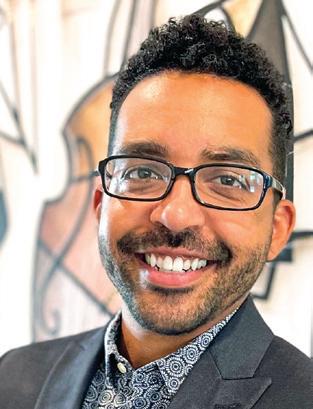
TMEA Elementary Vice-President CHRISTOPHER GILES
MARK YOUR CALENDAR
50 Southwestern Musician October 2023
assignment. By pressing play to hear their composition, they could know whether it was indeed a repeated pattern over the four measures.
With the four-measure setup, I asked students to create a pentatonic melody in the upper octave using their choice of an elemental form I provided: AAAB, AABB, ABAB, or ABAC . Students then would add in long lines in the lower octave to create implied chord progressions. The same supports are in place for students to selfassess before turning in their assignments. The students could see and hear if their composition followed the directions of the assignment.
In addition to enrichment activities that can be turned into assessments, games can be used to assess student knowledge. For example, I use the online platform Blooklet to develop quizzes (called “sets”) for my students. A set can be about instrument families, recorder fingerings, rhythm, or melodic concepts—the sky’s the limit! Once you create a set, you can give students a special code to access the set online and set a time limit for entering correct answers.
Blooket generates a report for the teacher to see which questions individual students missed, and it’s clear whether a question stumped the entire class. This formative assessment can guide a teacher’s future planning, and the students stay engaged in assessment through play. The free version of Blooket includes unlimited sets and edits to those sets and unique game mode options, and up to 60 students can play concurrently.
My favorite assessment that incorporates technology is our annual haunted escape room. Each October I decorate our school stage with fluorescent spiderwebs, black bats hanging from the ceiling, and tombstones on the walls. With spooky music playing, there are lots of puzzles to solve. I set up the escape room for my fifth graders to review and test their knowledge over rhythmic and melodic concepts, recorder fingerings, and information on the staff. We review all the materials that will be in the escape room on the second rotation of the school year. This helps us review our fourth-grade material and gets students who are new to the school on the same page. Students work in small teams to beat the 25-minute clock.
I use Google Forms for the student puzzles. There are so many options out there,
including our LMS, Schoology. I like the use of Google Forms because I can keep my Google Sheet open to see submissions and assist students who are struggling.
Using technology in the music classroom can be powerful. While it does require a lot of front-loading to set up everything, once you do, it is easy to edit and reuse activities from year to year. The great thing about Chrome Music Lab, Blooket, and Google Forms is that the websites grade everything or provide a report for the teacher. Then it’s easy to take that data and transfer it to your grade book. Our students are digital natives, so we need to meet them where they are to keep them engaged not only in lessons but also in assessments.
Clinic/Convention Update
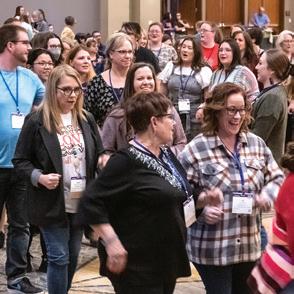
Speaking of incorporating technology in the music classroom, you’ll have many opportunities to learn about its use during our convention in February. With the Wednesday Technology Preconference, as well as technology clinics held throughout the convention, you can return home with new ideas to update your instruction and improve student engagement.
If you haven’t yet, discuss this amazing opportunity for targeted professional development with your administrator and request a substitute. No other event offers more concentrated learning
for music educators at every level. For elementary music educators alone, there are over 50 clinics to choose from! Go to www.tmea.org/convention to learn more.

Because of such high demand, hotels in TMEA’s negotiated blocks sell out very quickly. This system opens at 6 a.m. CT on October 5, and earlier that week, TMEA will email members a URL to utilize for optimal reservation website performance (including a waitlist function so you know where you are in the virtual line). For a preview of hotels that will be initially available, go to www.tmea.org/hotelrates.
Convention Volunteers
Join colleagues from across the state who will serve as Elementary Division volunteers during our convention. Offering just a little of your time as a volunteer can become a great opportunity to expand your network of support by meeting elementary music educators from across the state. With a convention of our size, we rely on hundreds of volunteers to ensure its success. Go to www.tmea.org/ elementaryvolunteer now to register and select assignments that interest you.
I look forward to the coming months where I’ll share information on our Invited Ensembles. For now, you can review a full list of all ensembles that will perform concerts at www.tmea.org/2024concerts. 0
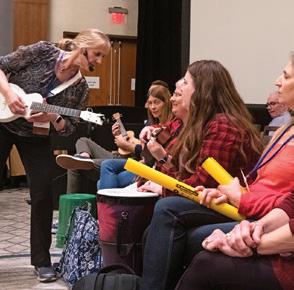

TMEA Clinic/Convention ELEMENTARY DIVISION 63 Elementary Division Clinics & Concerts LEARN FROM MASTER EDUCATORS ON THESE TOPICS AND MORE: Teaching Methods • Technology Use • Instrument Methods DEIA • Self-Care • Repertoire Selection • Curriculum Planning WWW.TMEA.ORG/CONVENTION 51 Southwestern Musician | October 2023
SCHOLARSHIP AUDITIONS
Scholarships are available for both music and non-music majors. These awards are intended to provide recognition for scholarship and talent in the study of music.
SCHOLARSHIP AUDITION DATES:
Saturday, November 18th, 2023 1 - 3 p.m.
Friday, February 16th, 2024 1 - 3 p.m.
Saturday, March 23rd, 2024 1 - 3 p.m.
Saturday, April 20th, 2024 1 - 3 p.m.
Individual audition dates may be requested if necessary.
For specific qualifications for each award, visit www.tlu.edu/music-scholarships.
BACHELOR OF MUSIC IN ALL-LEVEL MUSIC EDUCATION
BACHELOR OF MUSIC IN PERFORMANCE
BACHELOR OF ARTS IN MUSIC
DEPARTMENT HEADS
Douglas R. Boyer Director, School of Music and Director of Choral Activities dboyer@tlu.edu 830-372-6869 or 800-771-8521
Eric Daub Director of Piano Studies edaub@tlu.edu
Eliza Jeffords Director of Strings ejeffords@tlu.edu
Zoe Chunghui Kim Interim Director of Vocal Studies ckim@tlu.edu
Brett A. Richardson Director of Bands brichardson@tlu.edu
FACULTY
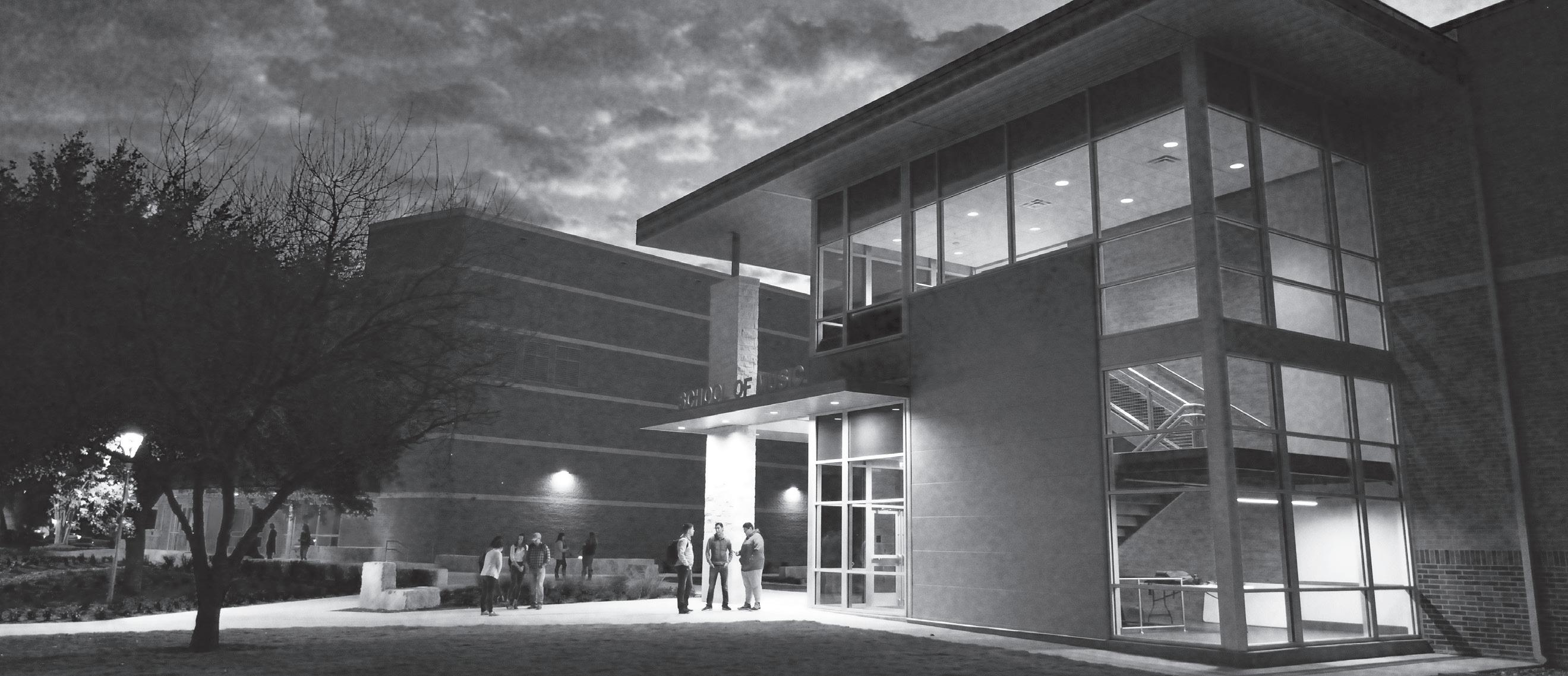
Adam Bedell Instructor, Percussion
Carol Brittin Chambers Composer in Residence & Composition
Lauren Casey-Clyde Asst. Professor, Trombone & Euphonium
Sean Holmes Asst. Professor, Horn & Music History
Stephanie Hulsey Instructor, Flute
Michael Keplinger Instructor, Guitar
Elizabeth Lee Asst. Professor, Cello
Deborah Mayes
Choral Accompanist
Scott McDonald Instructor, Saxophone, Jazz Band & Music Education
Carla McElhaney Asst. Professor, General Music
David Milburn
Instructor, Double Bass
Nicole Narboni
Asst. Professor, Piano
Daniel Orban
Instructor, Trumpet
Sung-Eun Park
Asst. Professor, Collaborative Pianist
Keith Robinson
Instructor, Tuba & Music Education
Jill Rodriguez
Instructor, General Music
Eric Siu
Asst. Professor, Violin

Yu-Hsin Teng
Asst. Professor, Collaborative Pianist
Shareen Vader
Instructor, Piano & Music Education
Mika Allison Valenzuela Instructor, Oboe
Yvonne Vasquez
Instructor, Mariachi
Tyler Webster
Asst. Professor, Clarinet & Music History
Sarah Wildey-Richmond
Asst. Professor, Bassoon
www.tlu.edu/music
TEXAS LUTHERAN UNIVERSITY SCHOOL OF MUSIC
TLU SCHOOL OF MUSIC
SOUND IDEAS
COLLEGE: Effective Preservice Teacher Education
by john m. denis
Preservice teacher education is complicated and challenging. Given that, preservice teacher educators must prioritize their approaches to best serve their students’ needs. While educator hierarchies vary, we can gain insights by sharing our perspectives. I am a fan of the concept of core practices, which are data-driven teaching actions or concepts that meet these six criteria laid out by Grossman et al. (2009):
1. They occur with high frequency in teaching.
2. Novices can enact them.
3. Novices can begin to master them.
4. They allow novices to learn more about students and teaching.
5. They preserve the integrity and complexity of teaching.
6. They are research-based and can improve learning. Researchers in music education have identified core practices (Abramo, 2016; Millican & Forrester, 2017), many of which may seem obvious to experienced music educators, such as rehearsing ensembles, providing meaningful feedback, sequencing instruction, and modeling. Other less obvious practices include building an environment that fosters critical thinking and musical problem-solving, incorporating students’ cultural identities, and selecting appropriate repertoire. Music teacher educators should reflect on teaching concepts that meet the six criteria above and work to include them in their classrooms and activities.
I think about applying core practices in two ways: subject knowledge and pedagogy. Readers familiar with the scholarship on educator prep may recognize this distinction as that between content knowledge (what is taught) and pedagogical content knowledge (how to teach the subject). Both are crucial to overall teacher success and must be developed in preservice music educators.
What content/subject knowledge do future educators need? While I won’t declare definitive answers, I will offer my priorities as a starting point for anyone seeking to examine their programs using an outside perspective. Ideally, I want my students to have a solid grasp on the following before entering their own classrooms:
• Proficiency in at least one form of musical performance (instrument, voice, etc.).
• Aural skills: ability to identify and transcribe simple melodies/harmonies.
• Basic understanding of functional theory/western music theory: identify chords, cadences, and form in various styles.
• Introduction to music from a variety of cultures and contexts.
• Knowledge of the history and performance practices of the
music they will teach (band history for band, jazz history for jazz, choral history for choir, etc.).
• Introductory knowledge and ability regarding the fundamental musical skills of their teaching context (reading notation, fingerings, embouchure/tone production, diction, etc.).
Remember that these are my priorities. The point is that music teacher educators should establish their own priorities that they examine thoughtfully and communicate clearly with students. Then they can hold students accountable for the content.
Identifying and learning subject/content knowledge is not enough; novice teachers must learn to engage students effectively with said content. It is here that pedagogical content knowledge comes into play, but with the catch that novice teachers must both learn the pedagogy and then practice the pedagogy. Preservice educator programs should address the following pedagogical concepts: assessment, scope and sequence (lesson planning), effective feedback, contextualized rehearsal techniques, introductory classroom management, and reflection.
Beyond just the pedagogy, preservice teachers need opportunities to practice the skill aspects of teaching and then reflect, with guidance, on the efficacy of their instruction. Peer teaching, partnering with a local school for teaching opportunities, music camps, and any other opportunities professors/mentors can find that allows novice teachers to teach and reflect on teaching is worth the time and effort.
Preservice teacher educators may benefit from identifying the core practices they want to emphasize in their curriculum. Take time to ensure students have learned both the necessary content and pedagogical content knowledge, and then seek out opportunities for preservice teachers to teach and reflect on their teaching. 0
John M. Denis is a professor at Texas State University in music education.

References
Abramo, J. (2016). Developing core practices for an instrumental music education methods course. Visions of Research in Music Education, 27. Retrieved from www.rider.edu/~vrme.
Grossman, P., Hammerness, K., & McDonald, M. (2009). Redefining teaching, re‐imagining teacher education. Teachers and Teaching, 15(2), 273–289. https://doi.org/ctqg92.
Millican, J. S., & Forrester, S. H. (2017). Core practices in music teaching: A Delphi expert panel survey. Journal of Music Teacher Education, 27(3), 51–64. https://doi.org/gc3c.
53 Southwestern Musician | October 2023
TMEA College Vice-President
Continued Certification Concerns
TMEA has been effective, thanks to the work of College Division members, in supporting our students and articulating the professional judgements of the education community to those charged with certification.
As members of the TMEA College Division we can address many of the important concerns facing music education in Texas and on preparing the next generation of music educators. In the last few months, we have had a small respite from the consuming issue of certification examinations thanks to the diverting dynamic of the biennial meeting of the Texas Legislature. Certification discussions have the power to dominate our conversation because their ramifications affect so many components of our curriculum. This conversation will return once the legislature addresses the current school funding crises triggered by the stalemate on vouchers. TMEA has been effective, thanks to the work of College Division members and TMEA leadership, in supporting our students and articulating the professional judgements of the education community to those charged with certification.
The certification process is inherently political. Like any form of licensing, the intent is to establish a standard practice that ensures an acceptable level of competence across the profession. What educators understand but that may not be generally recognized by the community at large is that examinations establish only a minimum standard. This often results in a public dialogue where methods of certification are promulgated as solutions to problems in education that examinations cannot address.
Teachers, especially our colleagues in public education, agree that the state has an interest in certifying educators. We expect this because
October—Renew your membership and register for the convention.
October 1 —TMEA College research proposal grant application deadline.
October 5, 6 a.m. CT—TMEA convention housing reservation system opens online.
October 6 —TMEA College Fall Conference in Austin.
October 15— Deadline for research poster session proposals.
November 1 —Collegiate Music Educator Award nomination deadline.
December 15 —College Student Essay submission deadline.
January 18 —TMEA convention early registration deadline.
February 7–10 —TMEA Clinic/Convention in San Antonio.
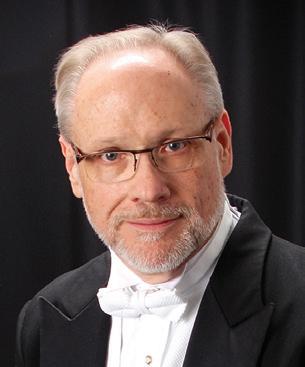
MATTHEW MCINTURF
MARK YOUR CALENDAR check www.tmea.org for updates 54 Southwestern Musician October 2023
we believe that education is valuable and critical to the future welfare of our society. In essence, the concern is that our voice is heard in the definition of the process. We need to continue to say that our curriculum must not be driven by a minimum standard determined apart from the larger process.
Teaching, like music, is an art that flourishes in the counterpoint of inspiration and practice. Guiding our students to become effective and empathetic artistteachers is a project much larger than any standard instrument of assessment. Our students must integrate the discipline of musicianship, the craft of teaching, and the leadership to inspire so they can thoughtfully place music in context for young people who may be encountering it for the first time. It is difficult to explain this in a simple descriptive sound bite, but it is critical that we present our case.
Fortunately, we have a strong track record of success that substantiates the positions we continue to present in our public advocacy. At this point, generations of outstanding music teachers have positively affected countless lives, opened educational doors, and cooperated in the process of creating independently motivated and thoughtful young citizens. Ultimately, the success of our students is the strongest case we make for the value of our work. Having 4,000+ college students in attendance at our last convention is an indication of the importance of our profession and our work.
It is important for us to address the certification concerns and work to ensure that our students are evaluated in an effective and just manner. However, it is a small part of our charge to offer our students the opportunity to excel in our profession. TMEA brings us together to create possibilities to expand those opportunities for our students. Sharing our professional concerns corporately strengthens our voice to decision-makers and allows us to contribute to the conversation in significant and compelling moments. However, the daily work of encouraging students to become accomplished professionals is the future of music education. It is their success that will ensure the efficacy of our investment.
College Division Fall Conference
Given our publication schedule, I’m writing this column in advance of our
2023 Fall Conference. Knowing how valuable this event always is, I want to offer thanks to all who will contribute, especially the Chairs and Committee members who voluntarily devote time and energy to the important work of our division. I am grateful to all who will attend and participate. It is always a pleasure to see colleagues from across the state and to meet new friends.
I am always impressed with the work of the division and the quality of thought that I encounter at this meeting. Thanks also go to the TMEA staff who make this opportunity possible for our division. We are the youngest and the smallest division in TMEA, yet we are supported unequivocally by the professionals in the TMEA office. There will be a report of the proceedings in a later edition of Southwestern Musician
TMEA Membership and Convention Registration
If you have not renewed your membership or registered for the 2024 Clinic/ Convention, now is the time. Based on the program planning, it promises to be an excellent event. I also encourage you to discuss the value of our convention and TMEA membership with your students. TMEA is committed to keeping College Student memberships affordable, and current college student members pay no fee to attend the convention.
Collegiate Music Educator Awards
November 1 is the deadline to submit nominations for Collegiate Music Educator Awards. This is a program designed to recognize outstanding music education students who will be graduating this semester. They receive a certificate and regalia cords and are listed on the TMEA website. The intent is to enhance the résumés of highly qualified students seeking their first positions. Please carefully review the criteria at www.tmea.org/collegiateaward and then nominate your qualified students for this honor.
Essay Contest
The College Division Essay Contest deadline for submissions is December 15. There is an undergraduate and a graduate division, and each winner will receive a $2,000 award. I believe this is a tremendous opportunity to encourage research and writing for our students. The submission portal, specific requirements, and information about the contest are available on the TMEA website. Please encourage your students to participate.
TMEA Scholarships
TMEA annually invests over $200,000 in college scholarships. As college faculty, we understand how desperately our students struggle to cope with the rising cost of a college education. TMEA’s commitment to help them in this endeavor is admirable. November 1 is the deadline to
Instruments Accessories
1849 University Ave. Berkeley, Ca 94703 800-322-6263 510-845-7178 www.forrestsmusic.com Your one stop shop for all things double reed since 1944 55 Southwestern Musician | October 2023
Rental Repair
TMEA Clinic/Convention COLLEGE DIVISION


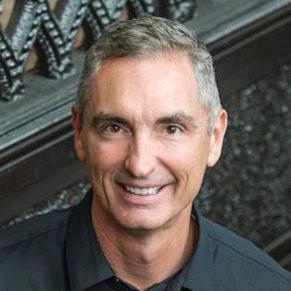
51 College Division Clinics & Research Poster Session


apply for TMEA Scholarships. Please see www.tmea.org/scholarships for criteria and the application. I particularly want to bring the student-teaching scholarships to your attention. TMEA college student members who will be student teaching in 2024, whether in spring or fall, need to apply by this date. All applicants who meet the criteria described on the website will be considered for this one-semester $2,500 scholarship.
TMEA also offers scholarships to graduate students. This can also be found on the website and is a great service to the profession. The significant cost of leaving a position to pursue graduate study has always been a barrier for many. It is even difficult for those who are earning a degree part-time. Please share this information with those who are considering post-graduate study.
Finally, TMEA can offer these substantial awards because of the generosity of our members and music industry partners. All these awards go to students who are enrolled in Texas institutions and thus directly benefit our division. Please consider donating to the Scholarship Fund and whenever possible, increase your donation (www.tmea.org/donate). It is a tangible way to invest in the future of our profession and open doors for our students. 0

ADVERTISER INDEX Baylor Univ .................... Inside Front Cover Bocal Majority Woodwinds 9 Boston Conservatory at Berklee 43 Enhance the Arts ............................. 42 Forrests Music, Inc. 55 Foundation for Music Education 28–29, 38–39 Mark Hughes Trumpet Mutes ................... 10 Merlin Patterson 5 Mika Hasler Competition 24 Music Is Elementary .......................... 47 Dr. Nancy Taylor ............................. 15 Oklahoma City Univ 26 Peripole, Inc. 48 Randall Standridge Music ...................... 19 Sam Houston State Univ 41 Texas A&M Univ/Commerce .................... 20 Texas Association for Symphony Orchestras 10 Texas Christian Univ 33 Texas Lutheran Univ ....................... 35, 52 Texas Tech Univ Inside Back Cover Texas Woman’s Univ 3 Trinity Univ .................................. 12 Univ of Colorado Boulder 46 Univ of North Texas Back Cover UT/El Paso .................................. 30 UT/San Antonio .............................. 23 West Texas A&M Univ 44 William Carey Univ 11 Young Audiences, Inc. of Houston ............... 24
WWW.TMEA.ORG/CONVENTION
College
Clinicians Learn more at www.tmea.org/clinicians Learn about the latest research and much more, including: Teacher preparation • DEIA • Wellness • Teaching methods • Research methods & results
Carlos Abril Nicole Robinson
Featured
56 Southwestern Musician October 2023
J.T. & Margaret Talkington College of Visual & Performing Arts School o f Music
Take control of your future as you prepare for a career as a professional musician, educator, or industry leader. Our music students thrive in small class sizes and one-on-one studio courses with faculty across a variety of areas and musical styles. From outstanding teachers in public schools, colleges, and universities, to professional careers as musicians and performers on some of the biggest stages, our students find their calling through a long tradition of excellence at Texas Tech.
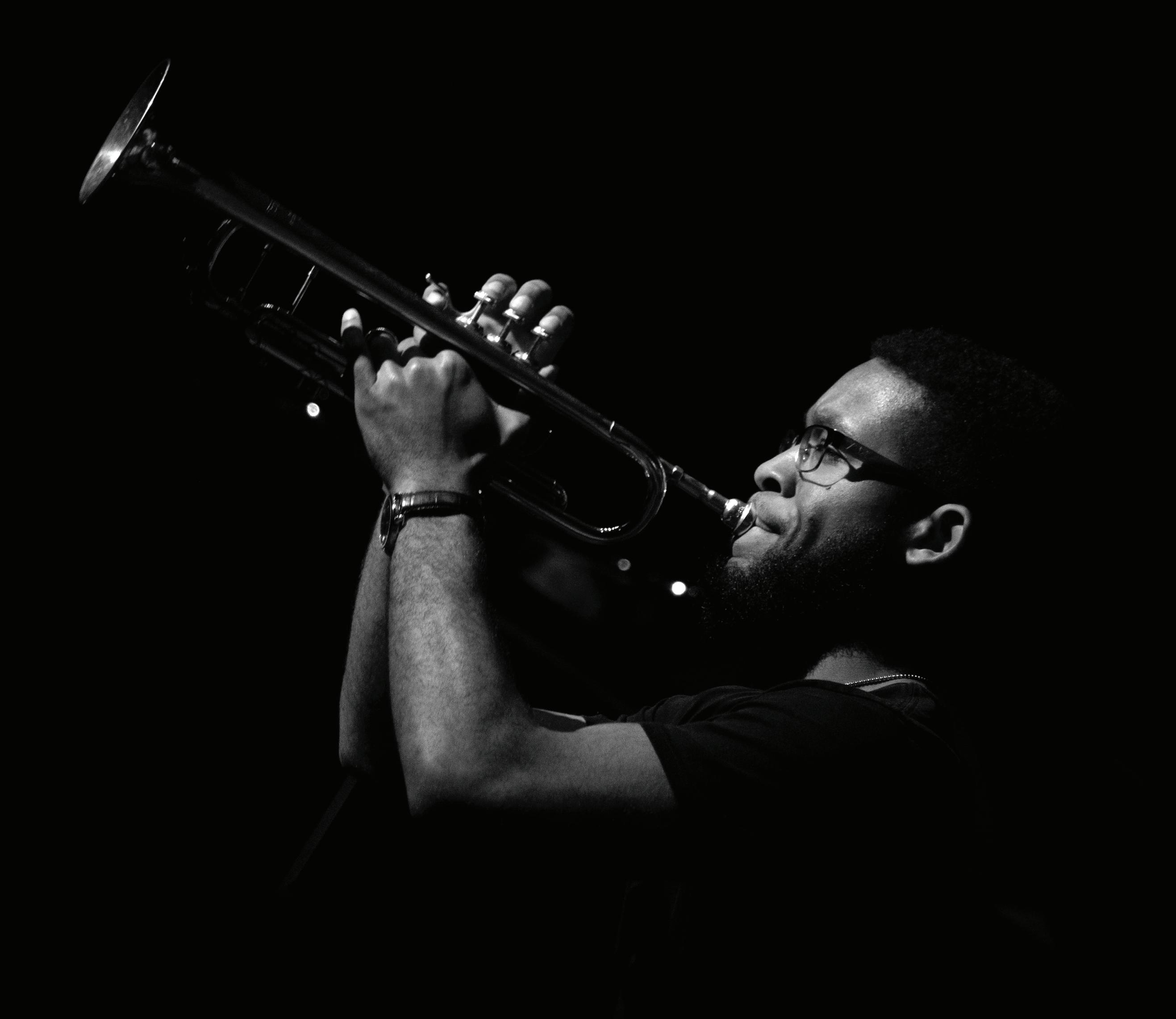
Ap p ly T od ay
depts.ttu.edu/admissions/apply/
Aud iti on Days
Saturday, February 17, 2024
Saturday, March 2, 2024
Recorded and remote auditions are available for select instruments.
Vis it Days
Monday, October 9, 2023
Monday, February 19, 2024
ttu.edu/Music | schoolofmusic@ttu.edu |
806.742.2274
TO FROM


STEP INTO YOUR OWN SPOTLIGHT Audition Dates 01.27.2024 02.03.2024 02.24.2024 02.02.2024 (Graduate Only) 02.16.2024 (Graduate Voice & Piano only) APPLY TODAY MUSIC.UNT.EDU UNIVERSITY OF NORTH TEXAS COLLEGE OF MUSIC Serving our diverse musical culture with excellence, integrity and imagination.
















































 — Paula Crider Professor Emerita, University of Texas
— Paula Crider Professor Emerita, University of Texas









 by tom harrington
by tom harrington



















































 by denise eaton
by denise eaton

























































